Mary Edna Fraser grew up with her head hanging out the side of her grandfather’s silver airplane. During a time of social upheaval and war protest, she was able to look out across the inter-coastal waterways of the Georgia and Carolina coast and gain a unique perspective. Since she was a child, these wide-open aerial views have led her to contemplate her place amidst land, sky and sea; leaving a lasting impression. Today, she makes a living as a batik artist, depicting landscapes, seascapes and spacescapes with an ancient wax and dye technique. Her vibrant, light-filled work expresses a human sense of lost and found. In doing so, Mary Edna reminds us that we are divine individuals on the ground, but still only tiny specks in the cosmos. Her talent has been identified by planetary geologists that saw her selected as an artist for NASA in 1995. Currently working with Smithsonian National Air and Space Museum in collaboration with a planetarium composer Mary Edna plans to map the planets in silk and sound.
Immersed in nature, Mary Edna makes her home on a tidal creek, ten minutes outside of downtown Charleston, South Carolina. Her studio is a secluded oasis from the urban sprawl of the city center. Protected from the outside world by live oaks and giant magnolia trees, she regularly hums along with the sea birds and cicadas, free to pursue her ever-changing creative whims.
This portrait is part of our ongoing collaboration with ZEIT Online who present a special curation of our pictures on their site.
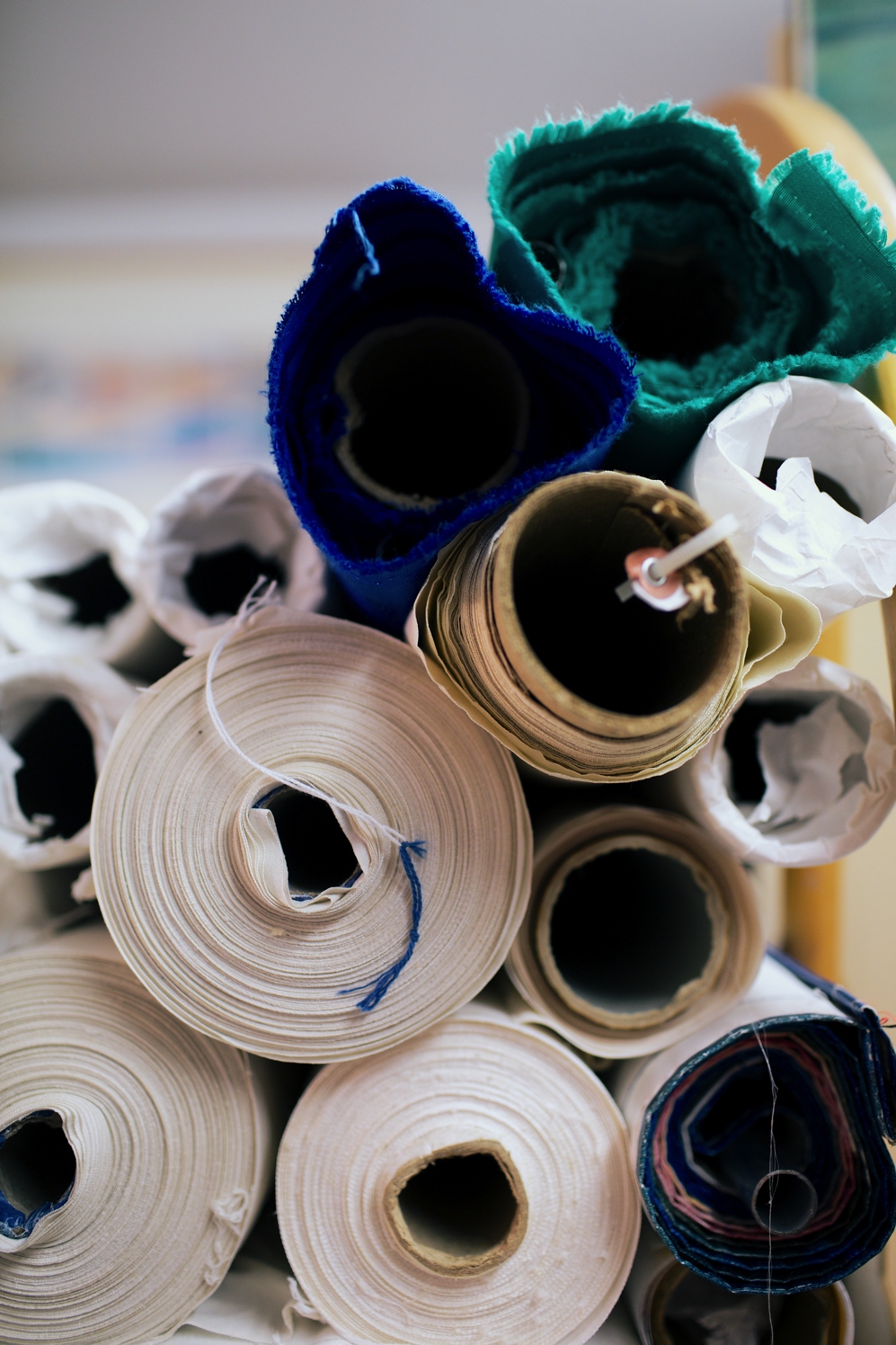
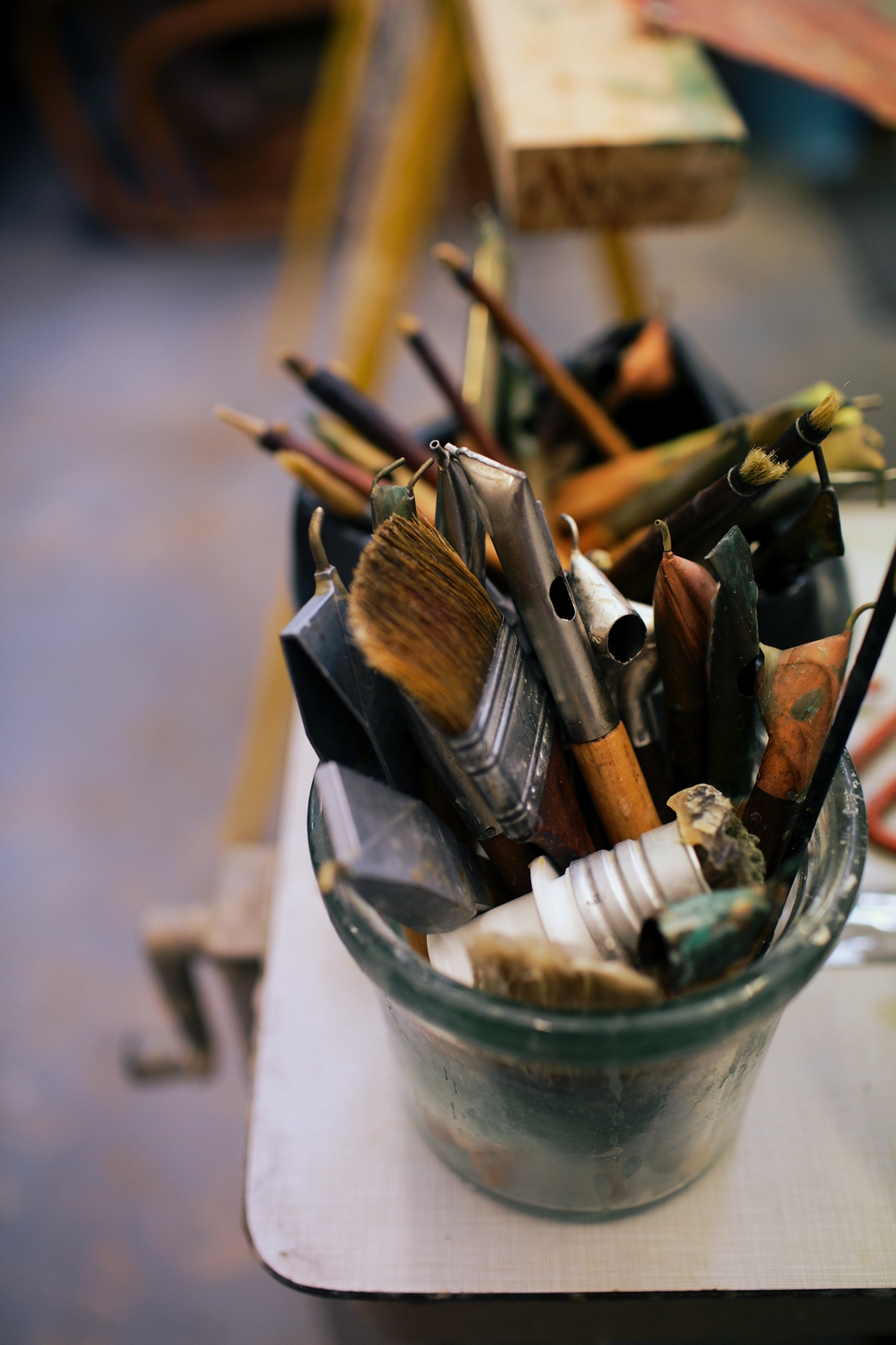
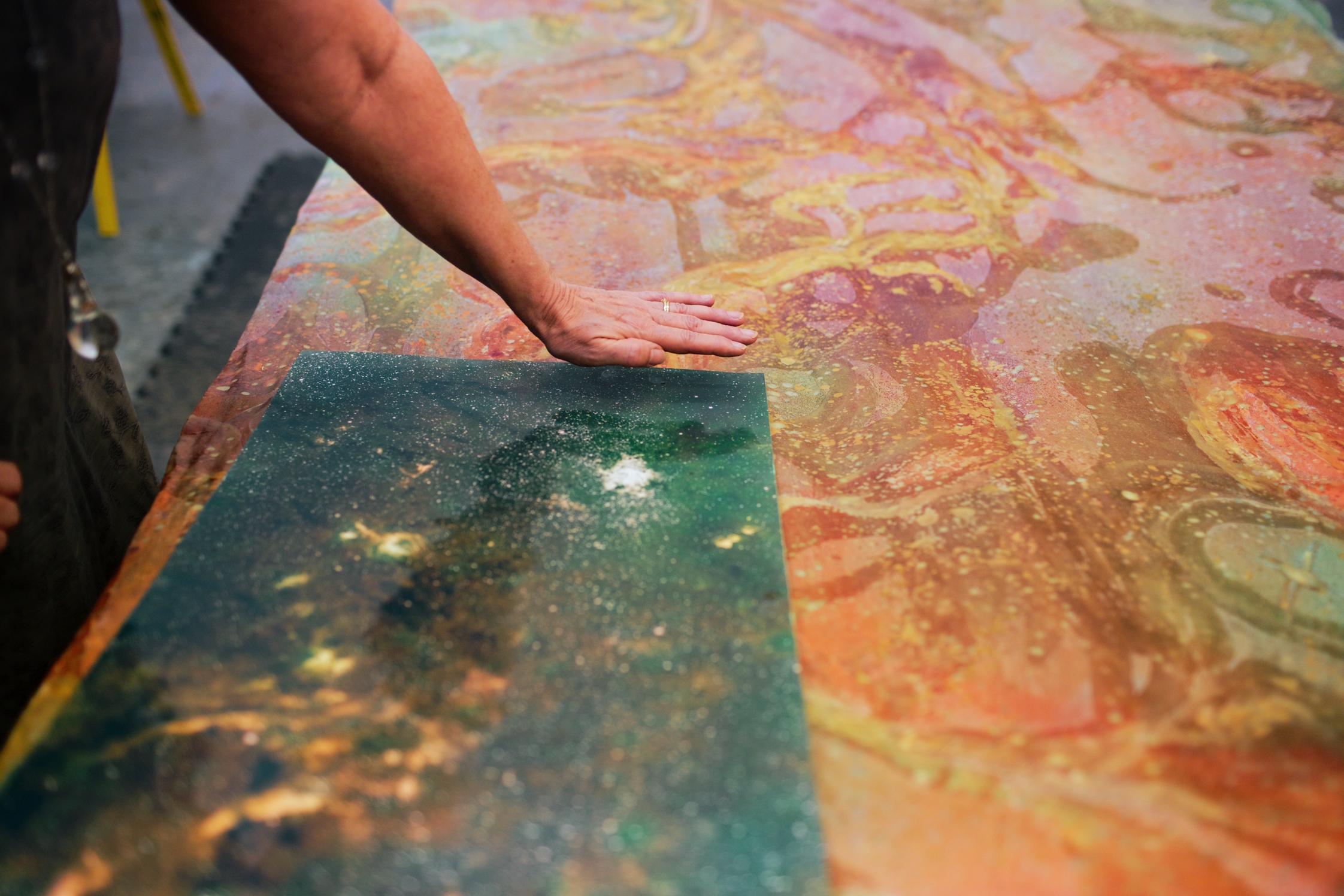
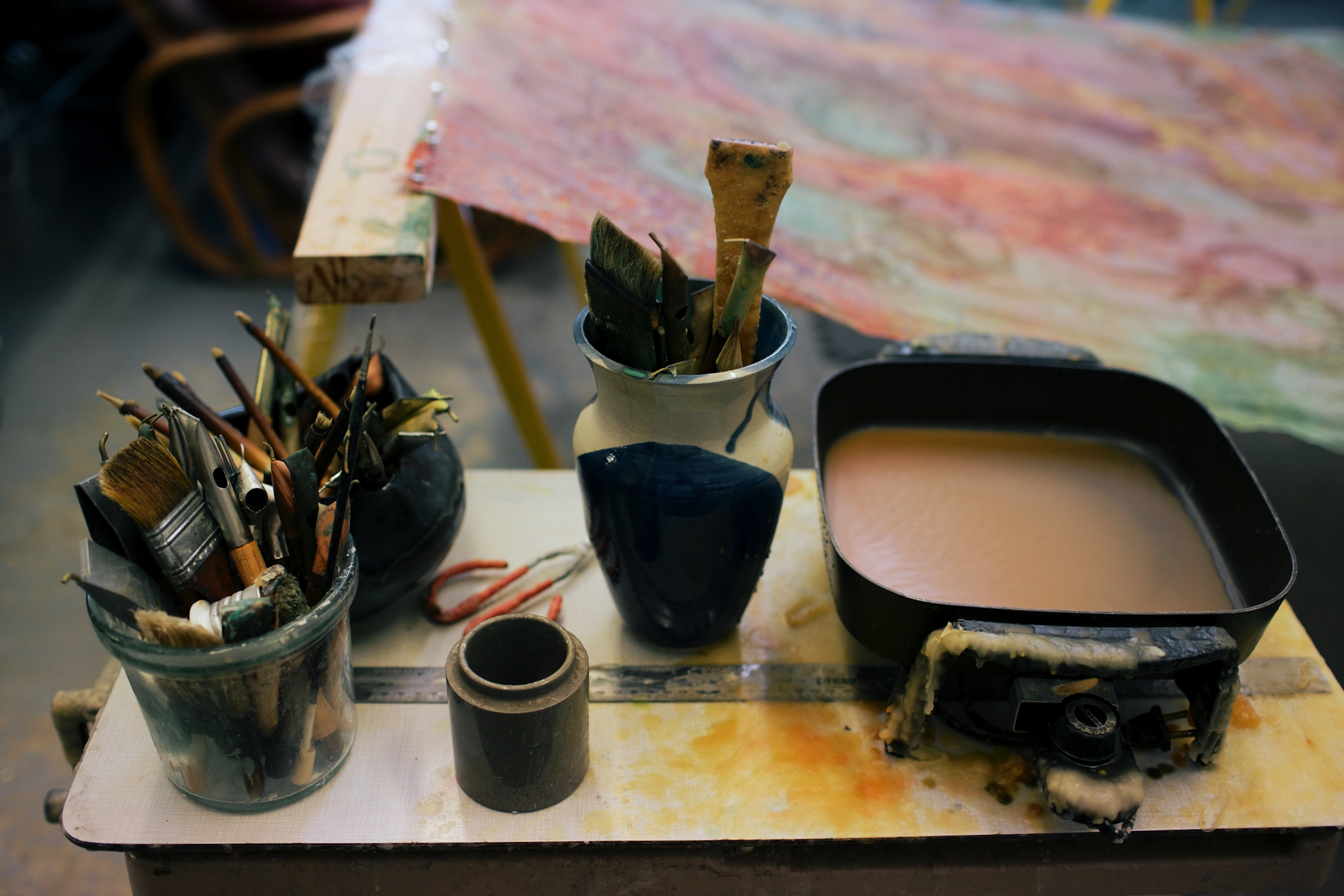
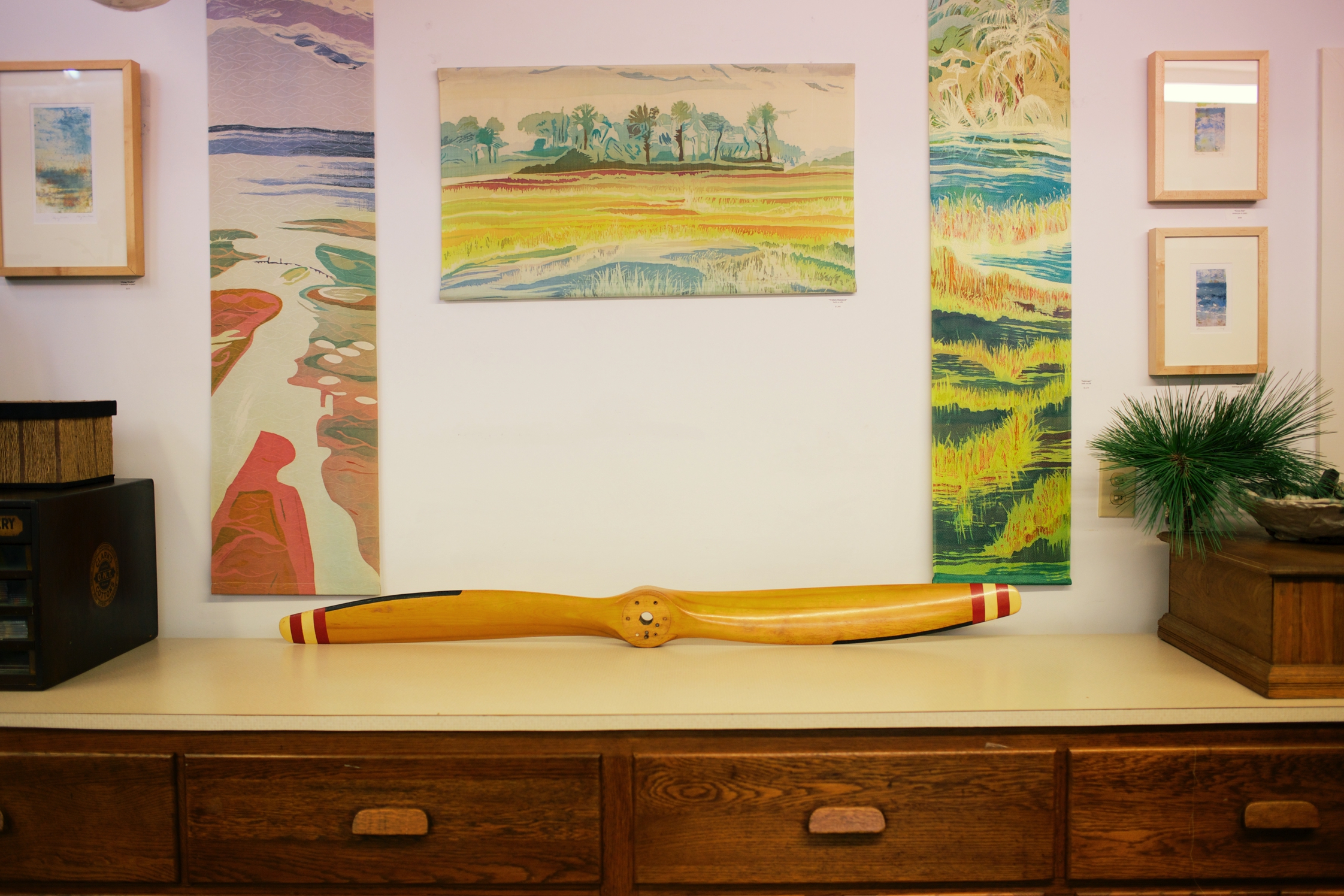
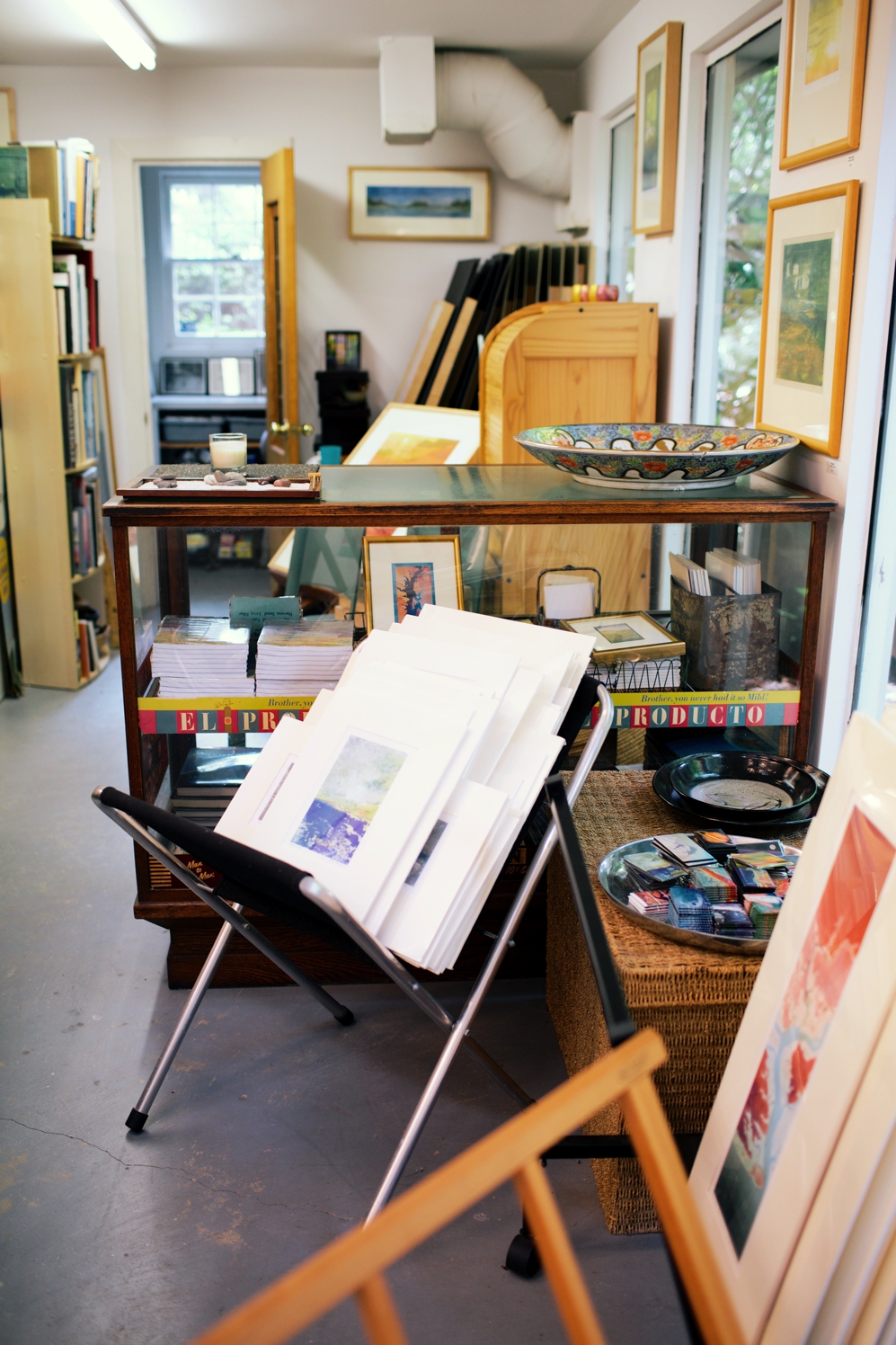
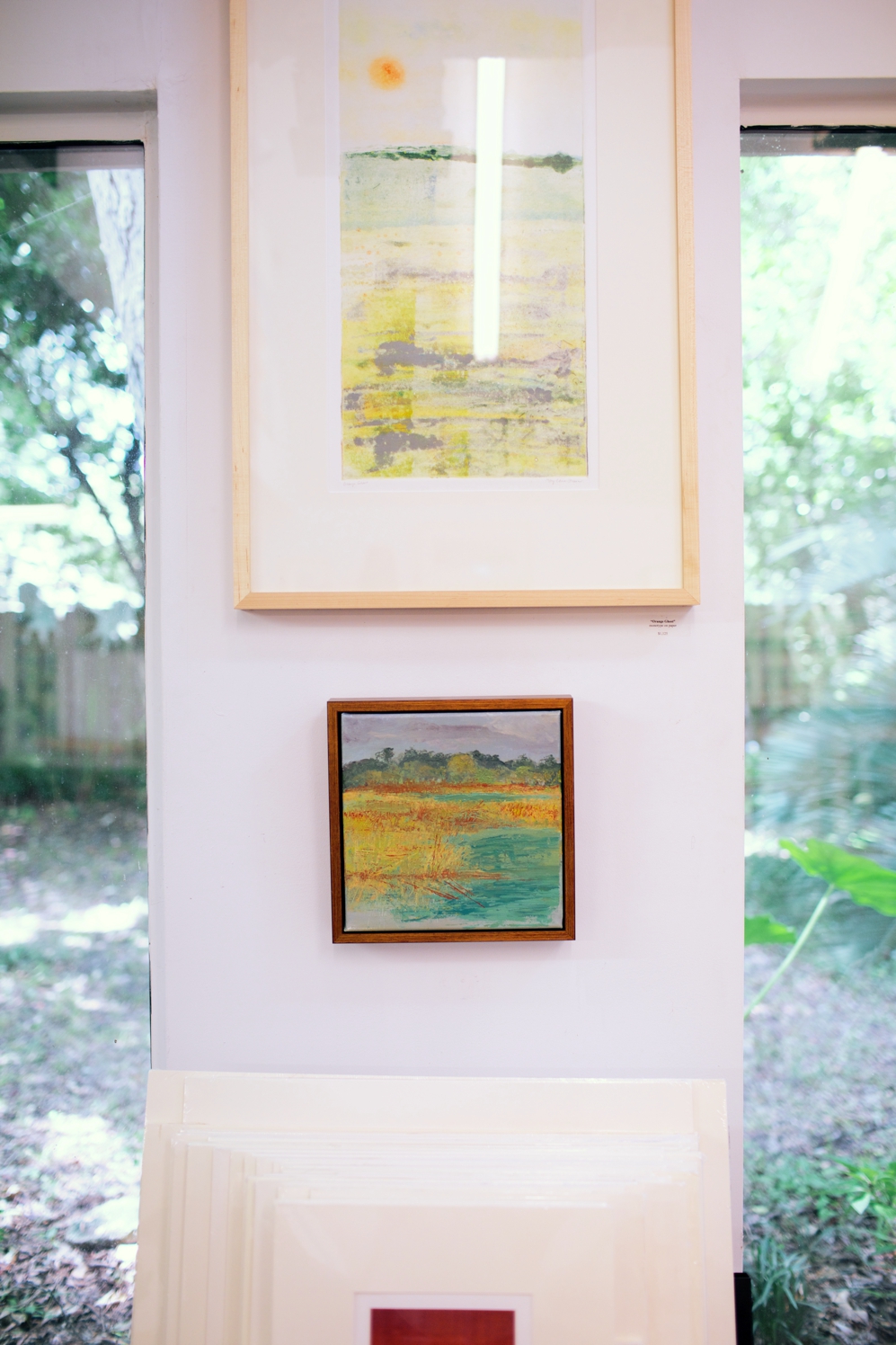
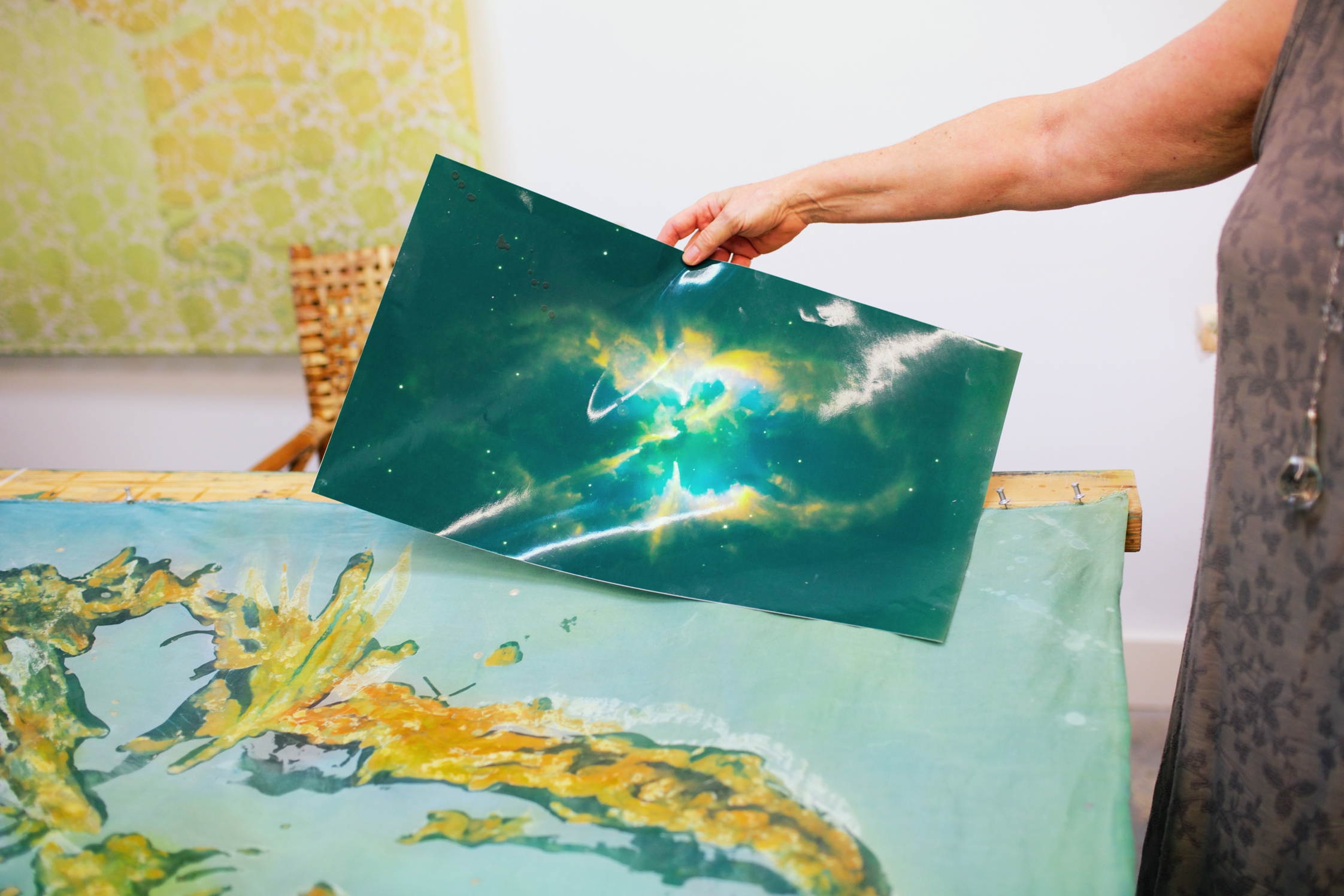
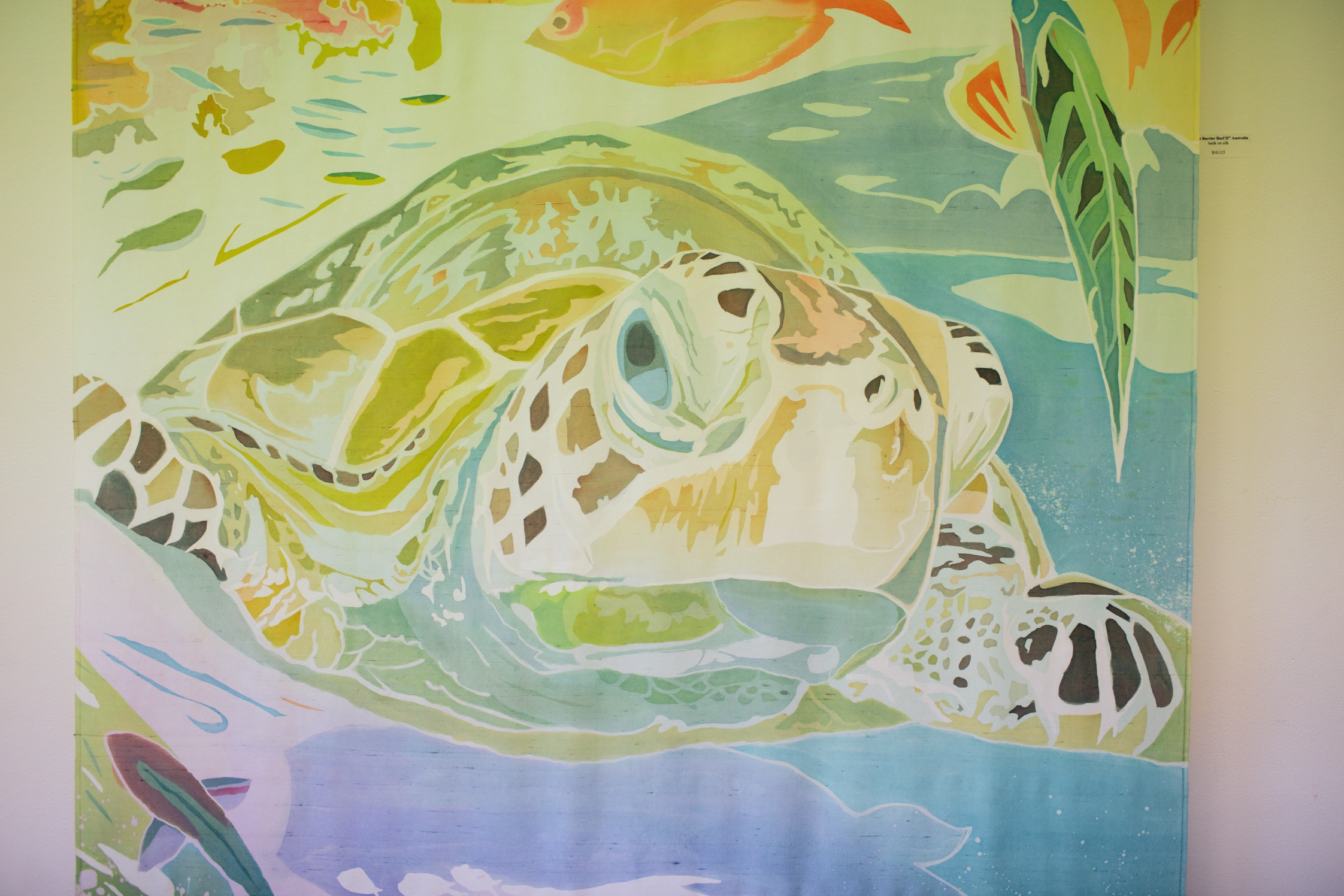
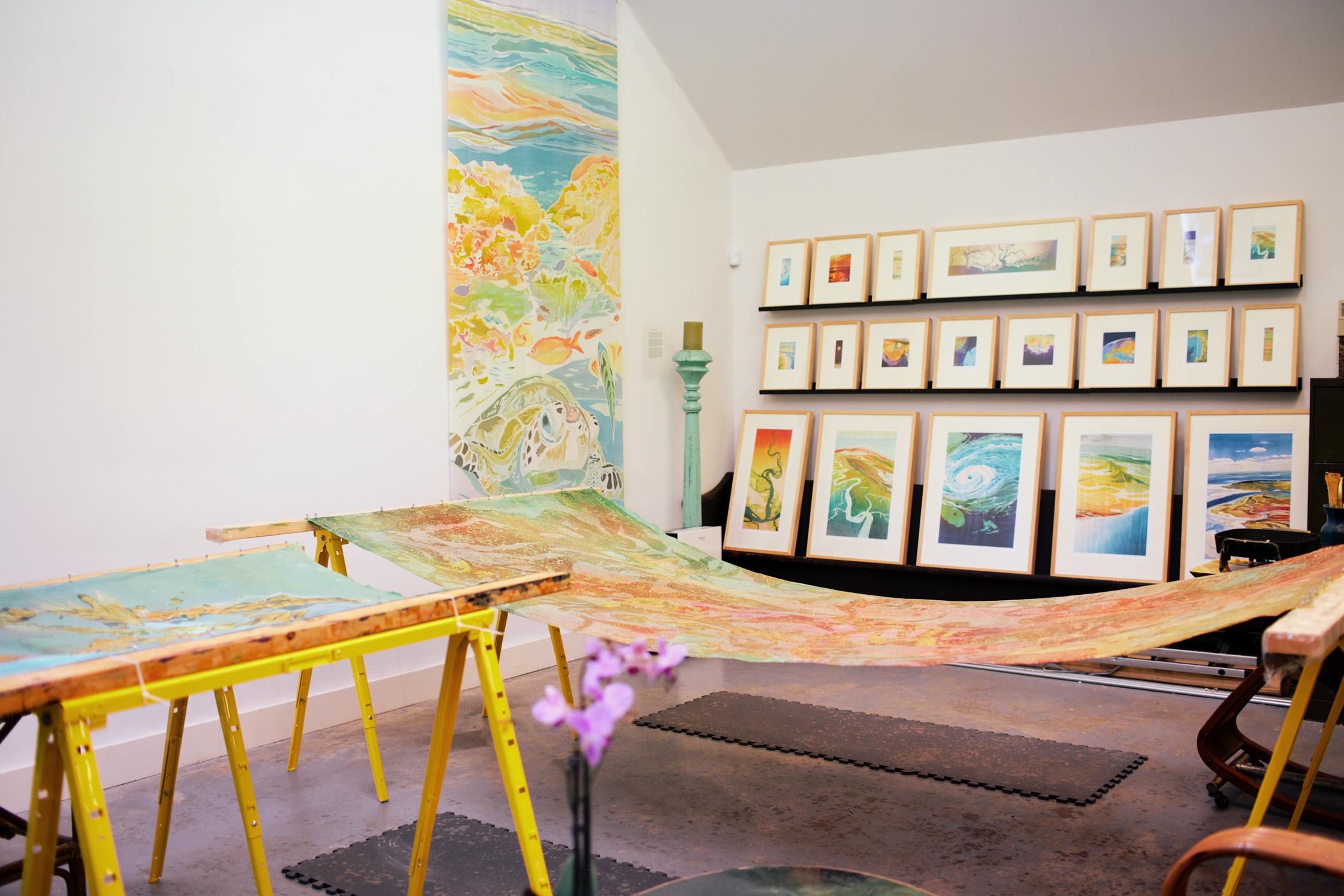
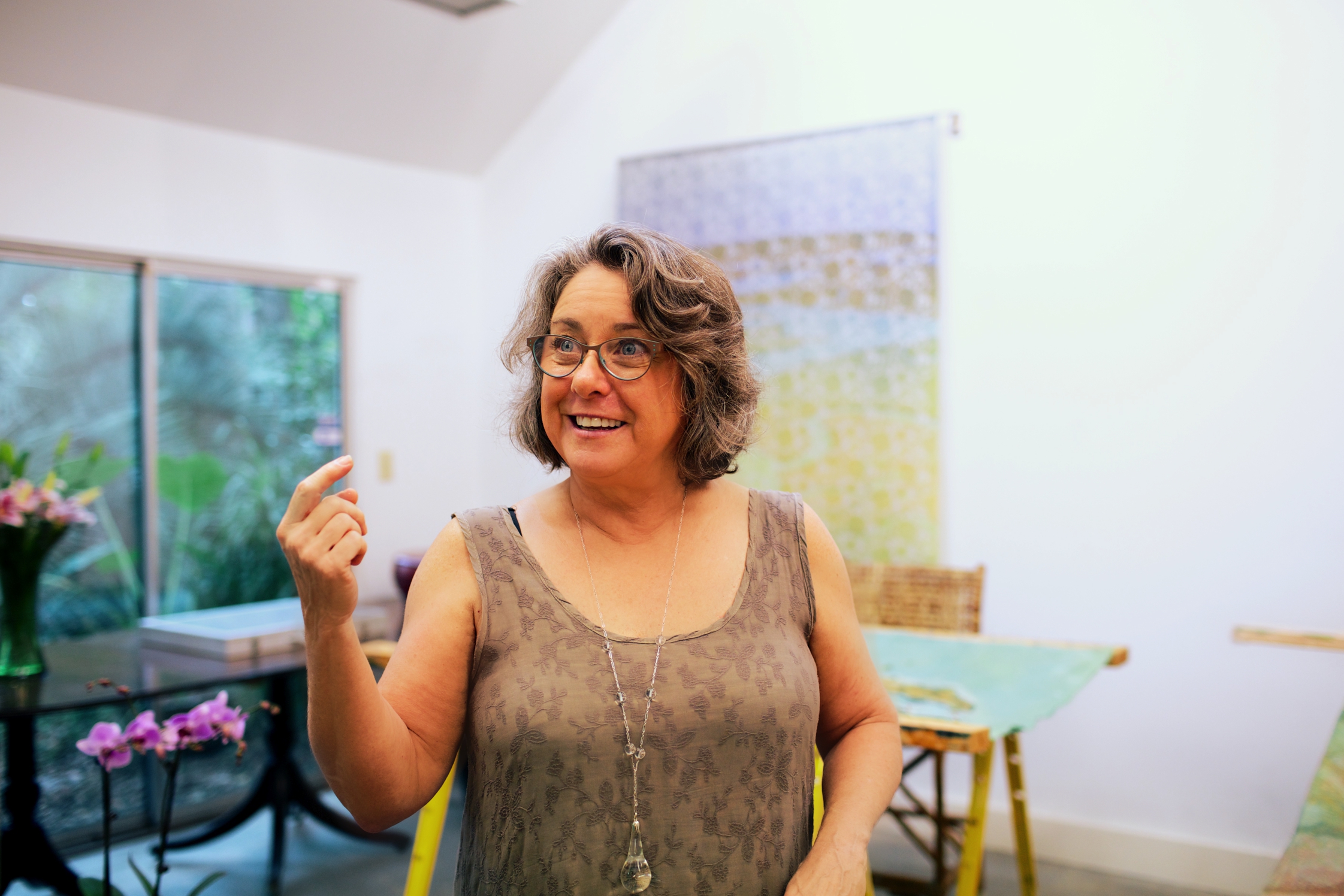
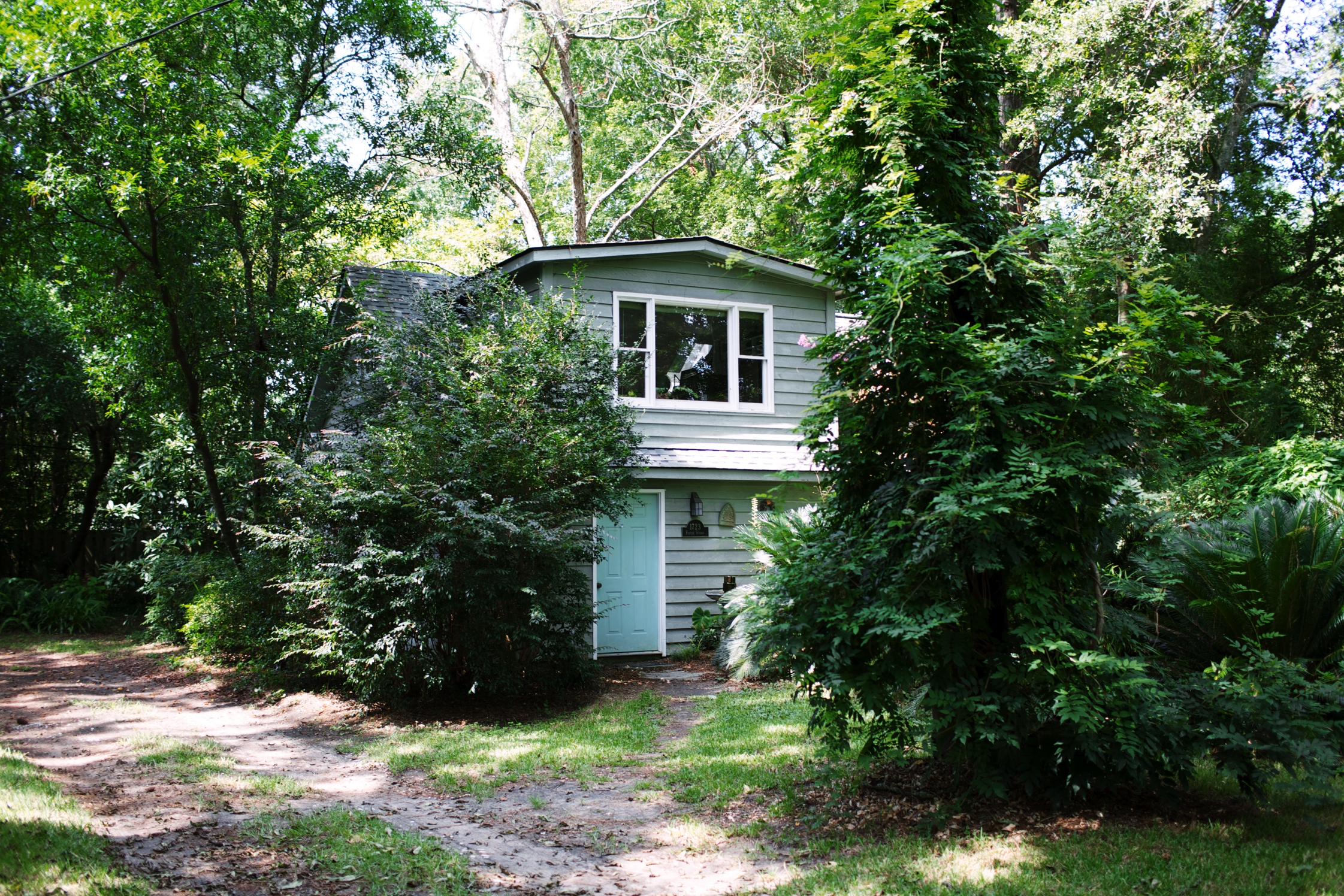
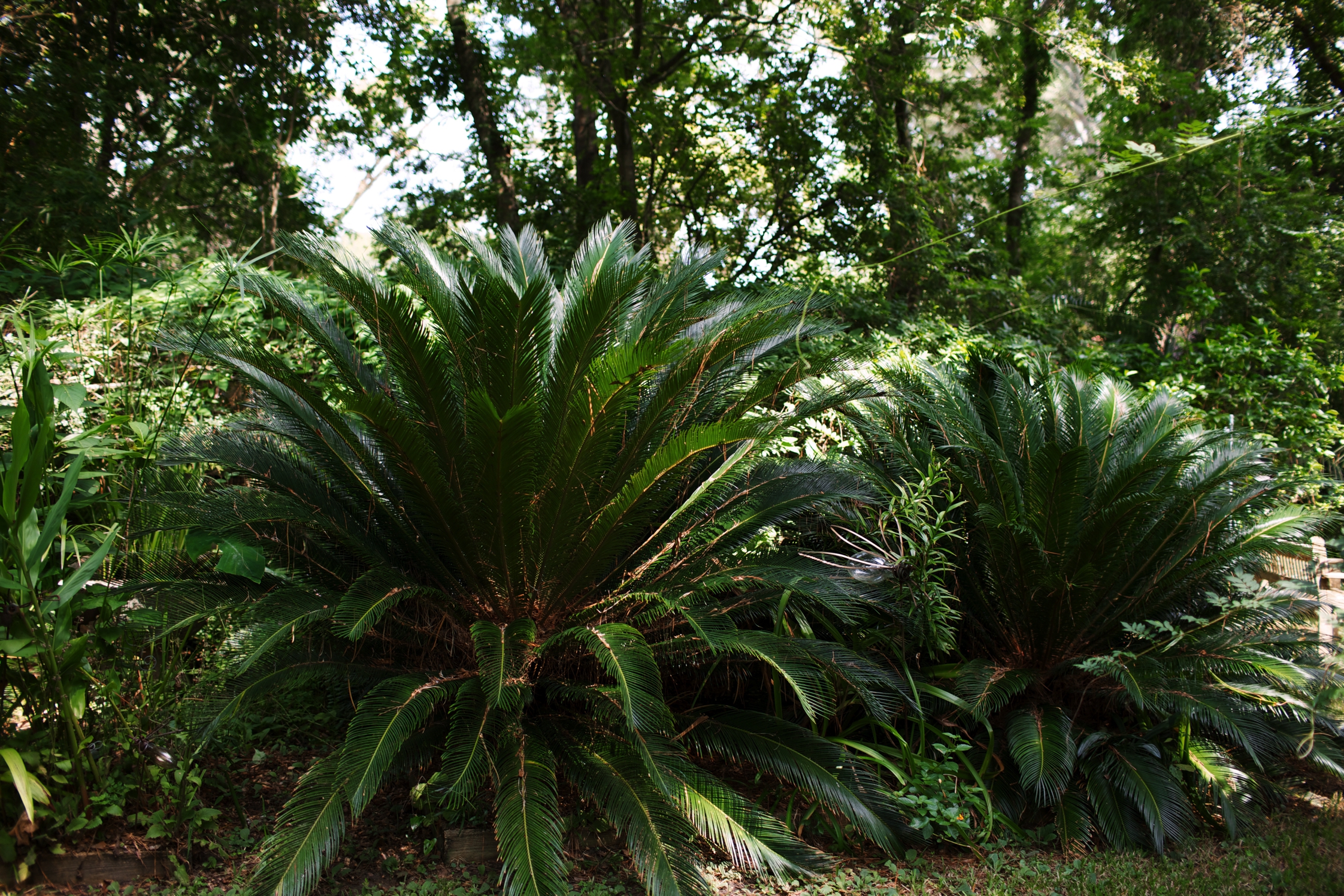
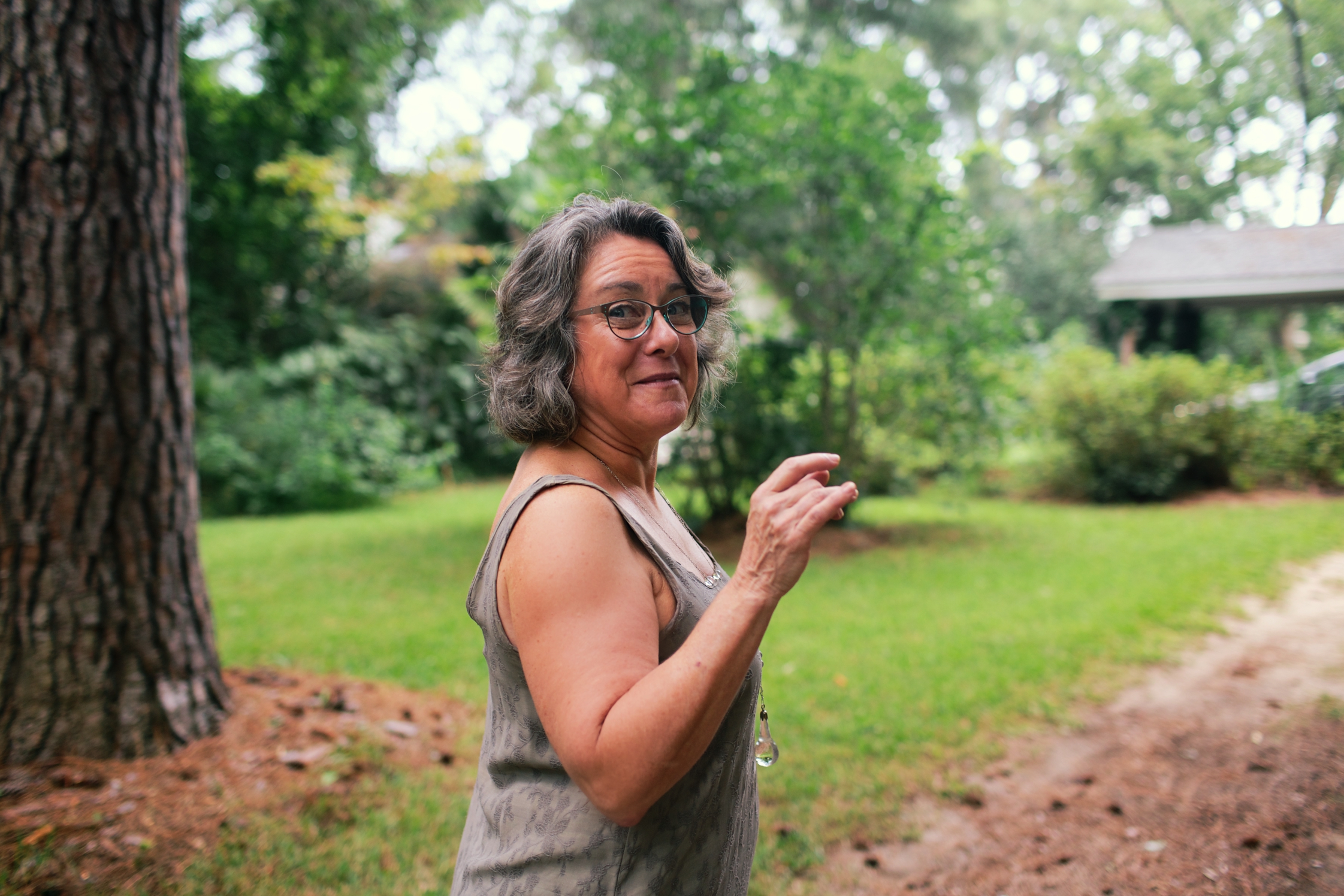
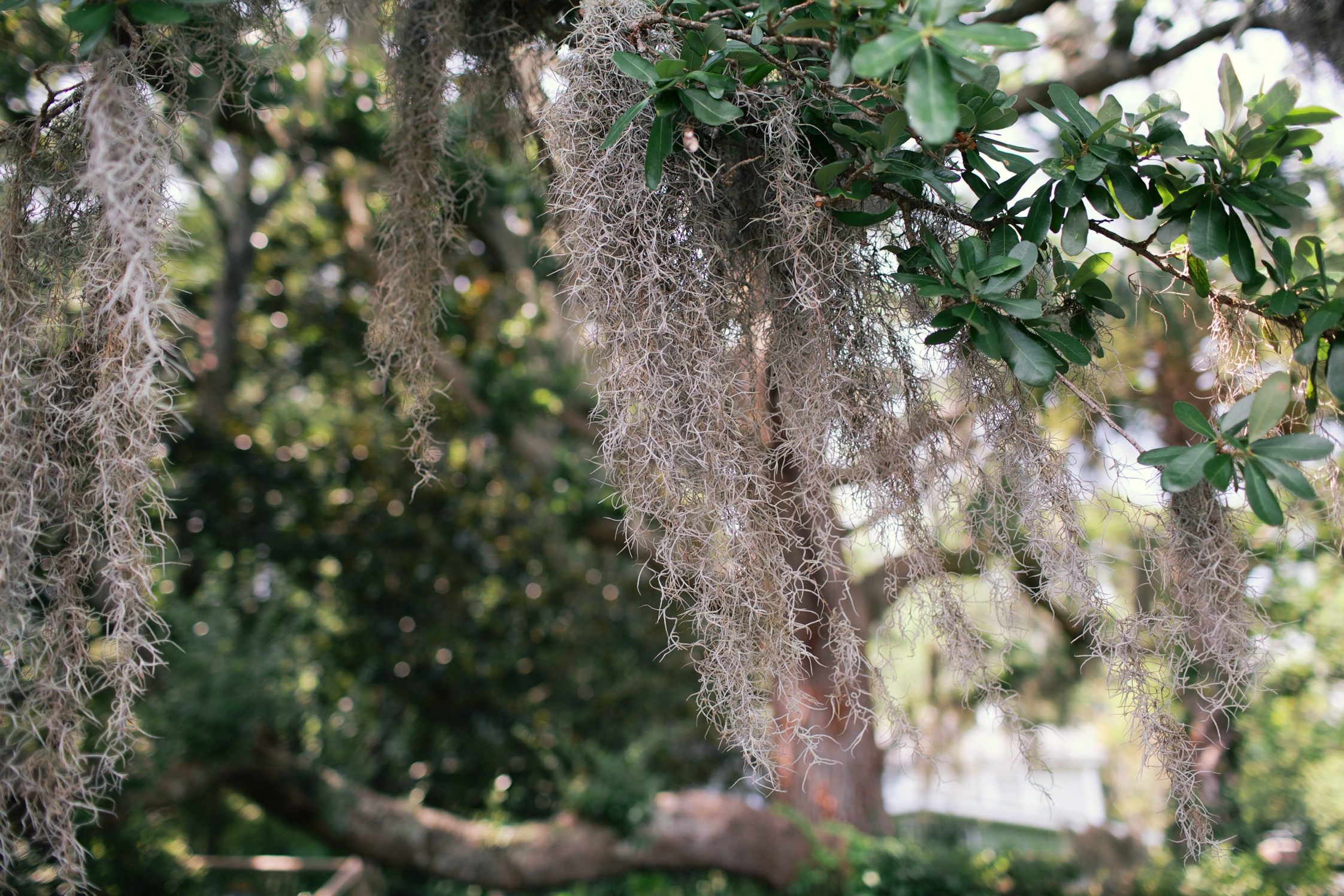
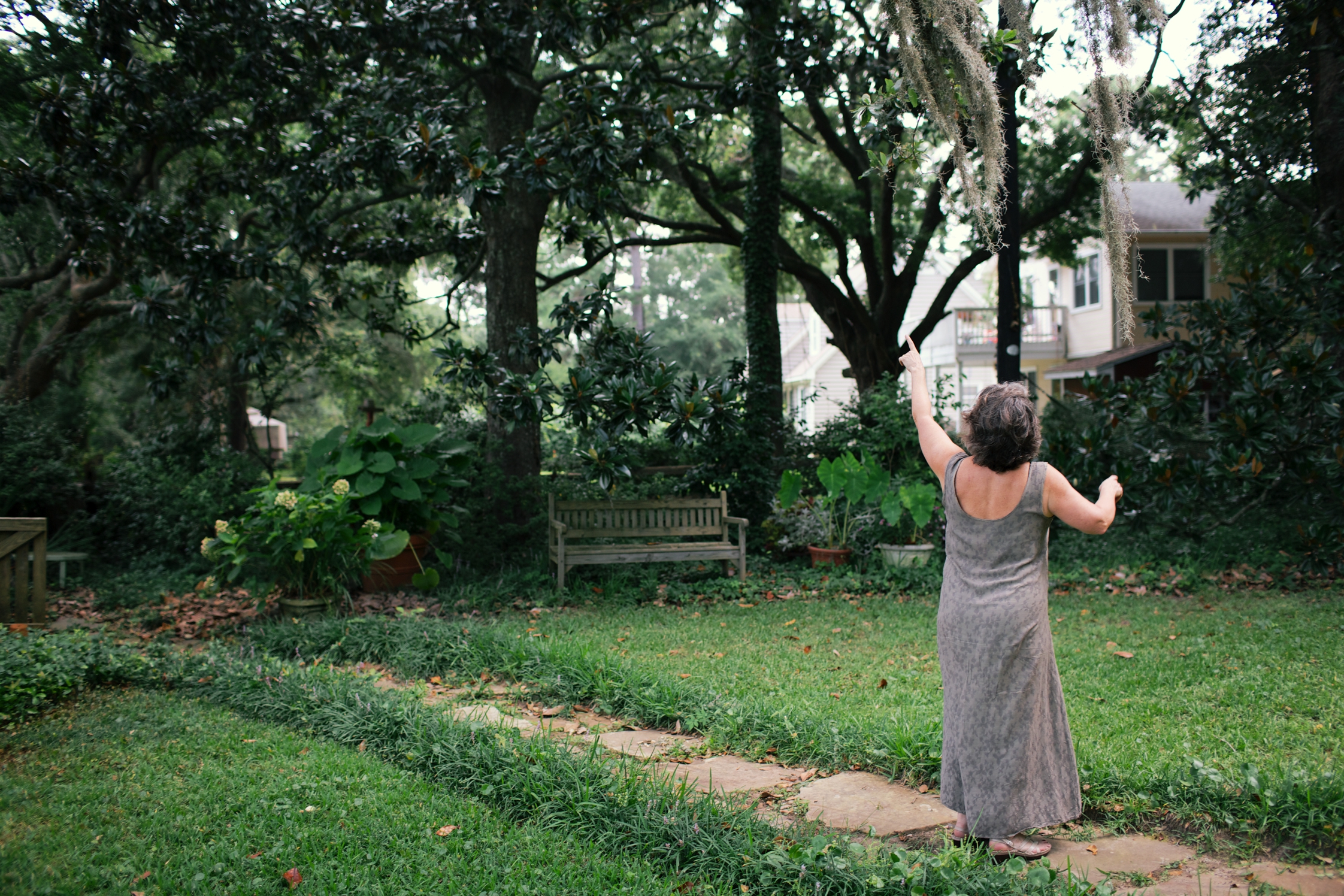
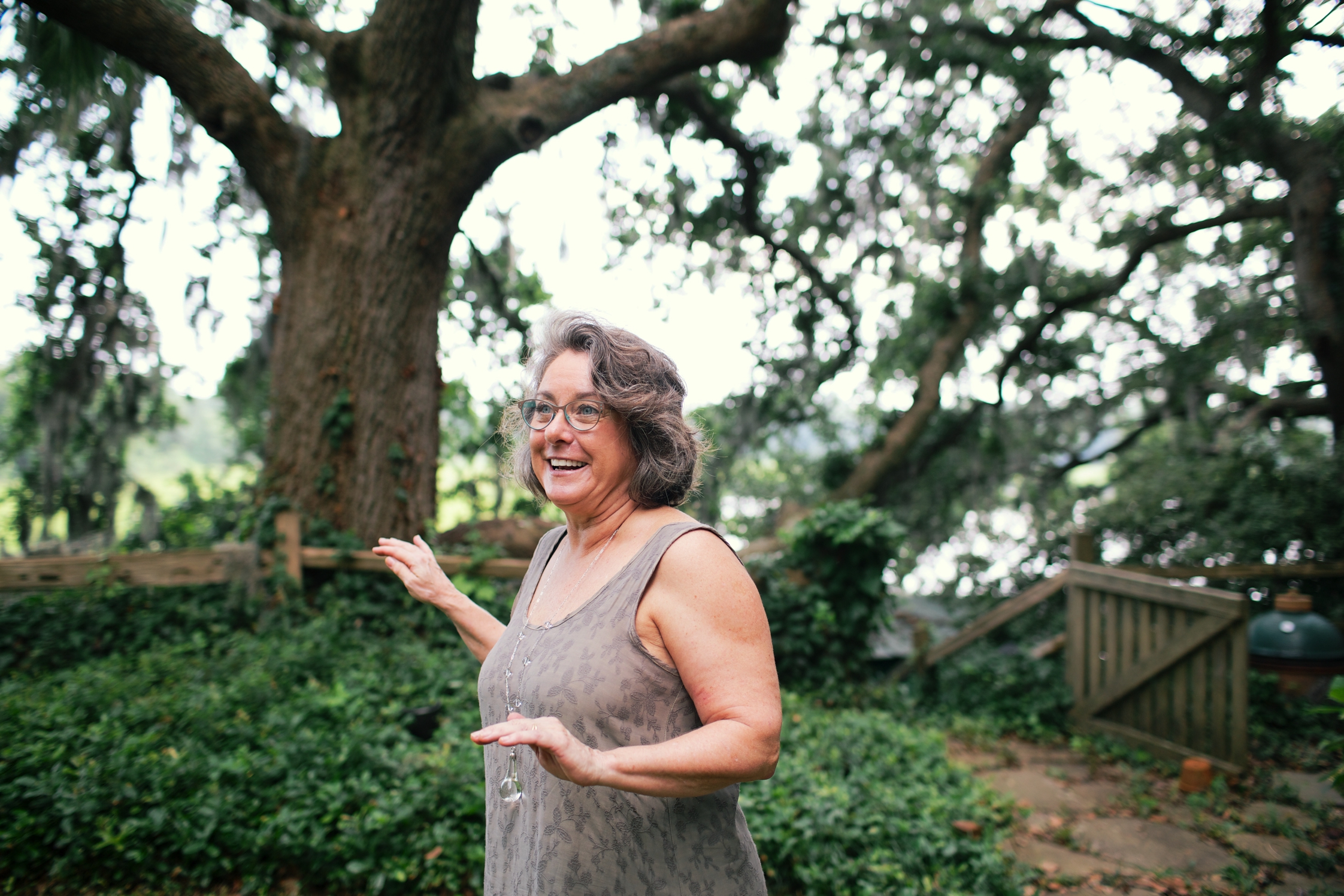
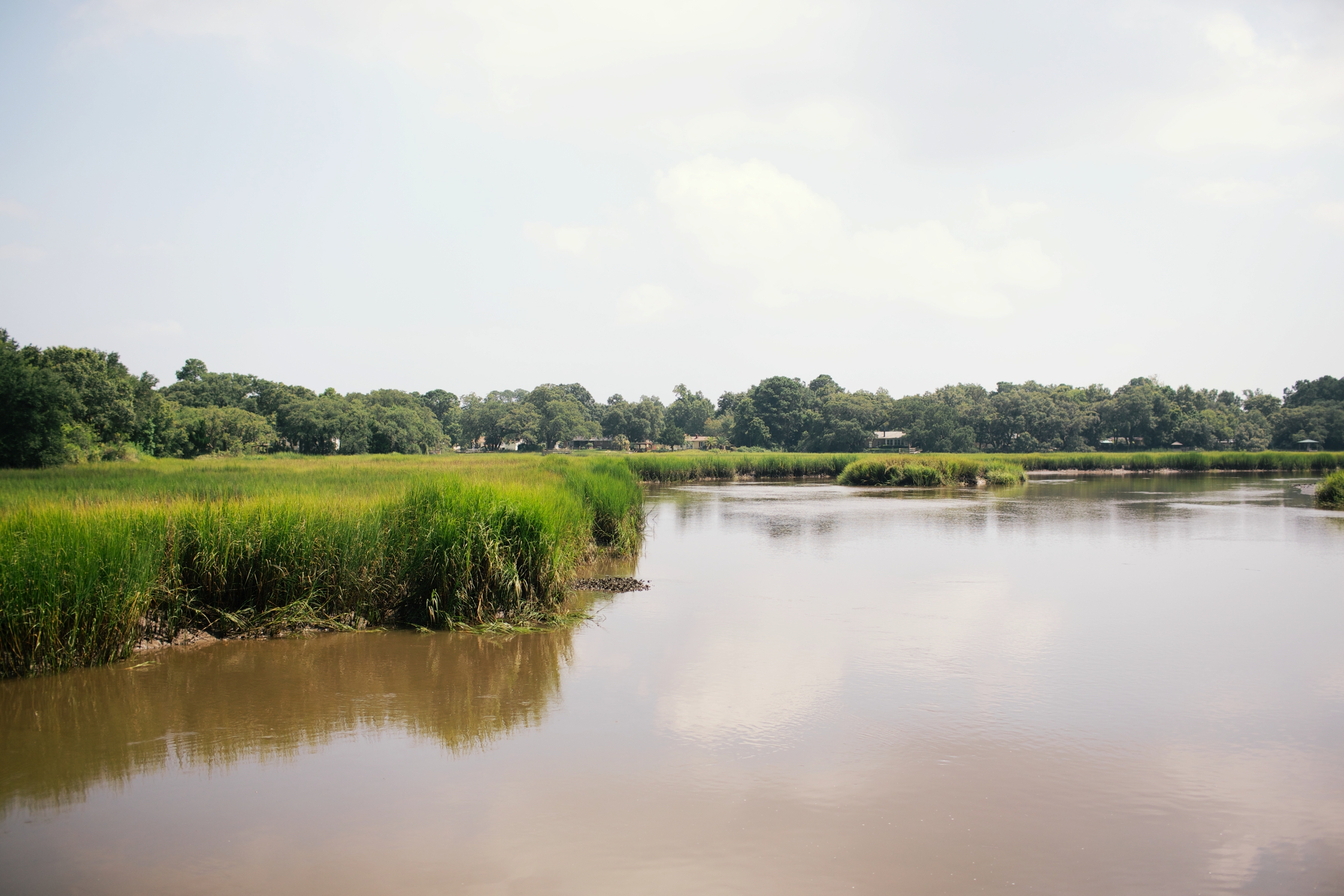
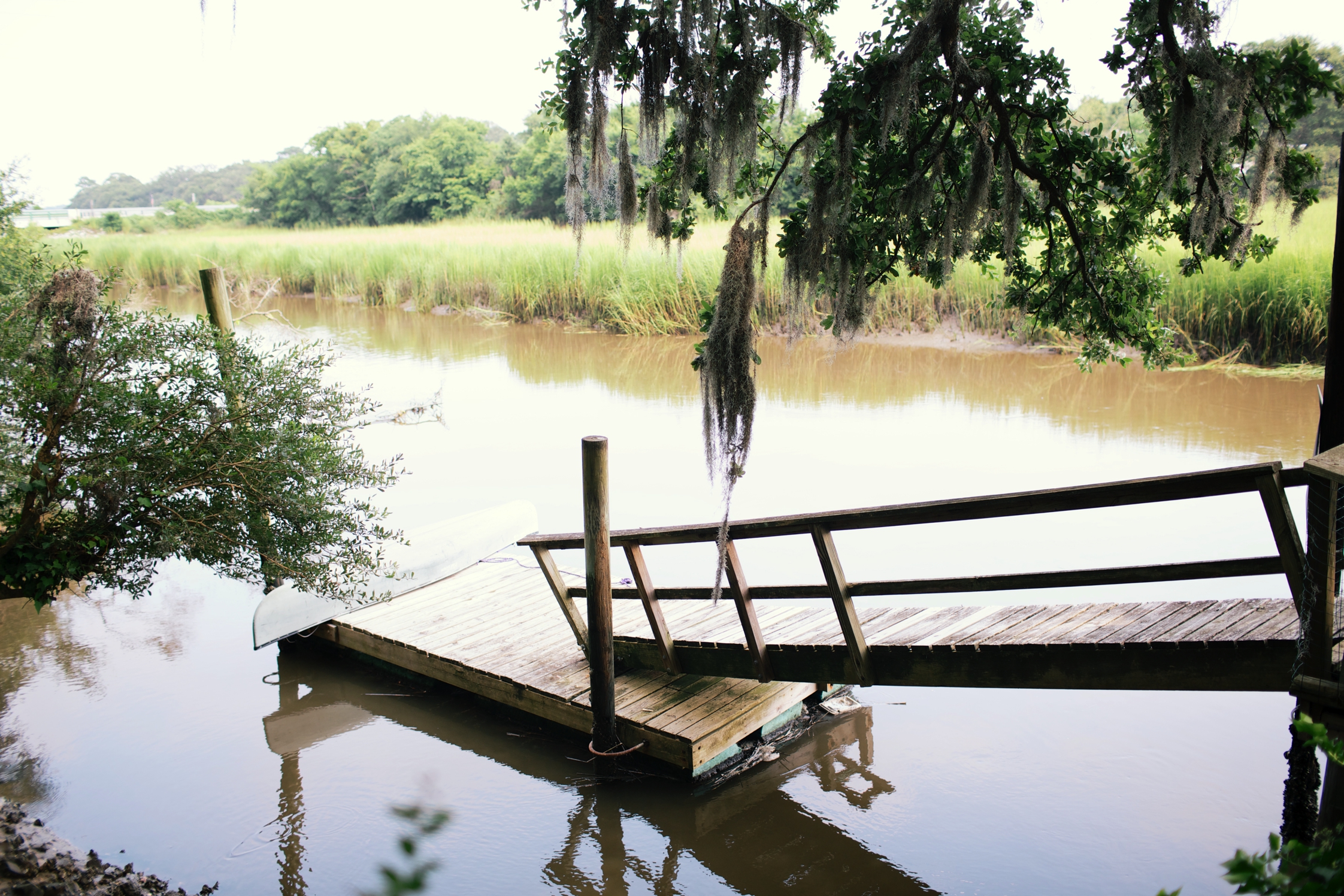
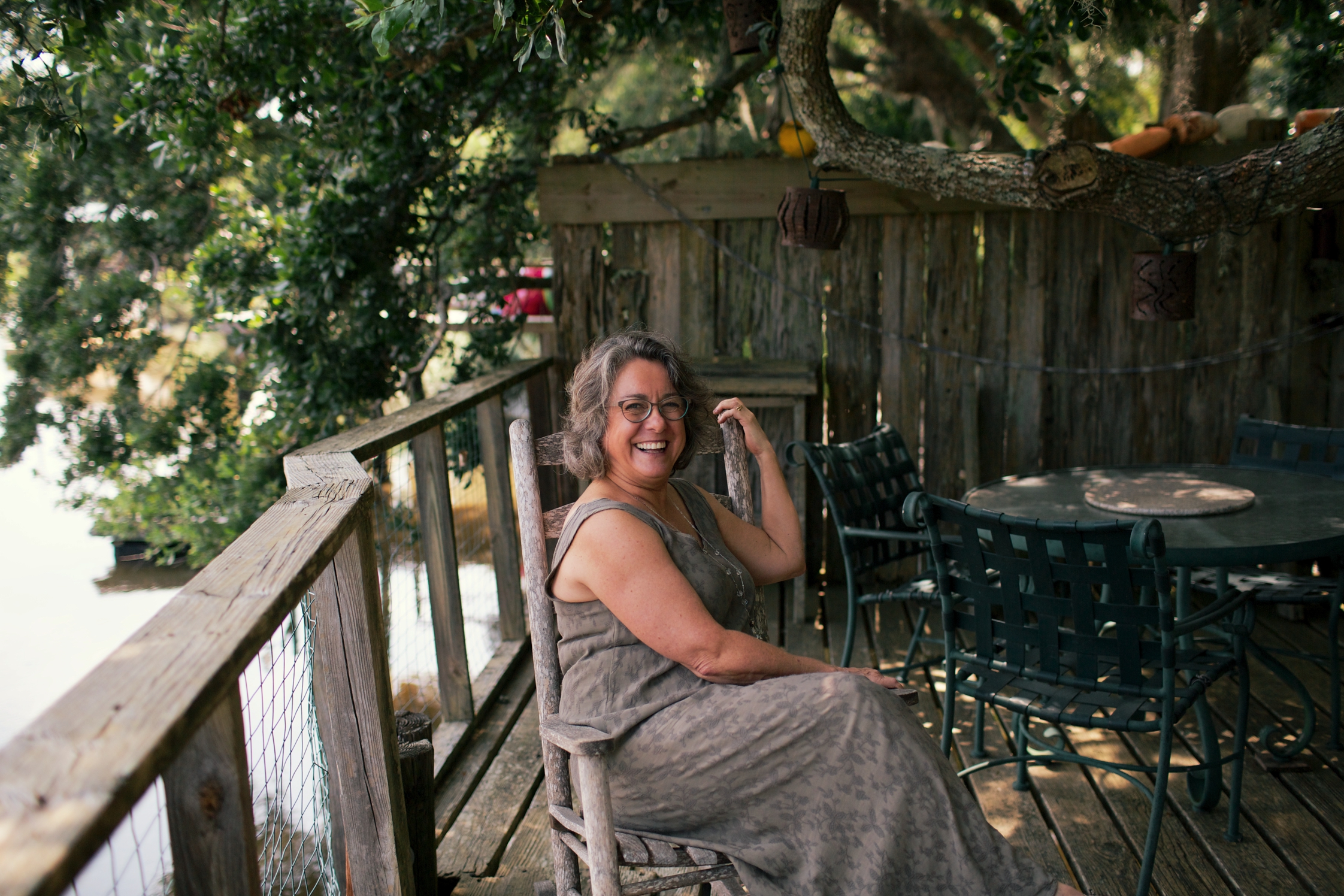
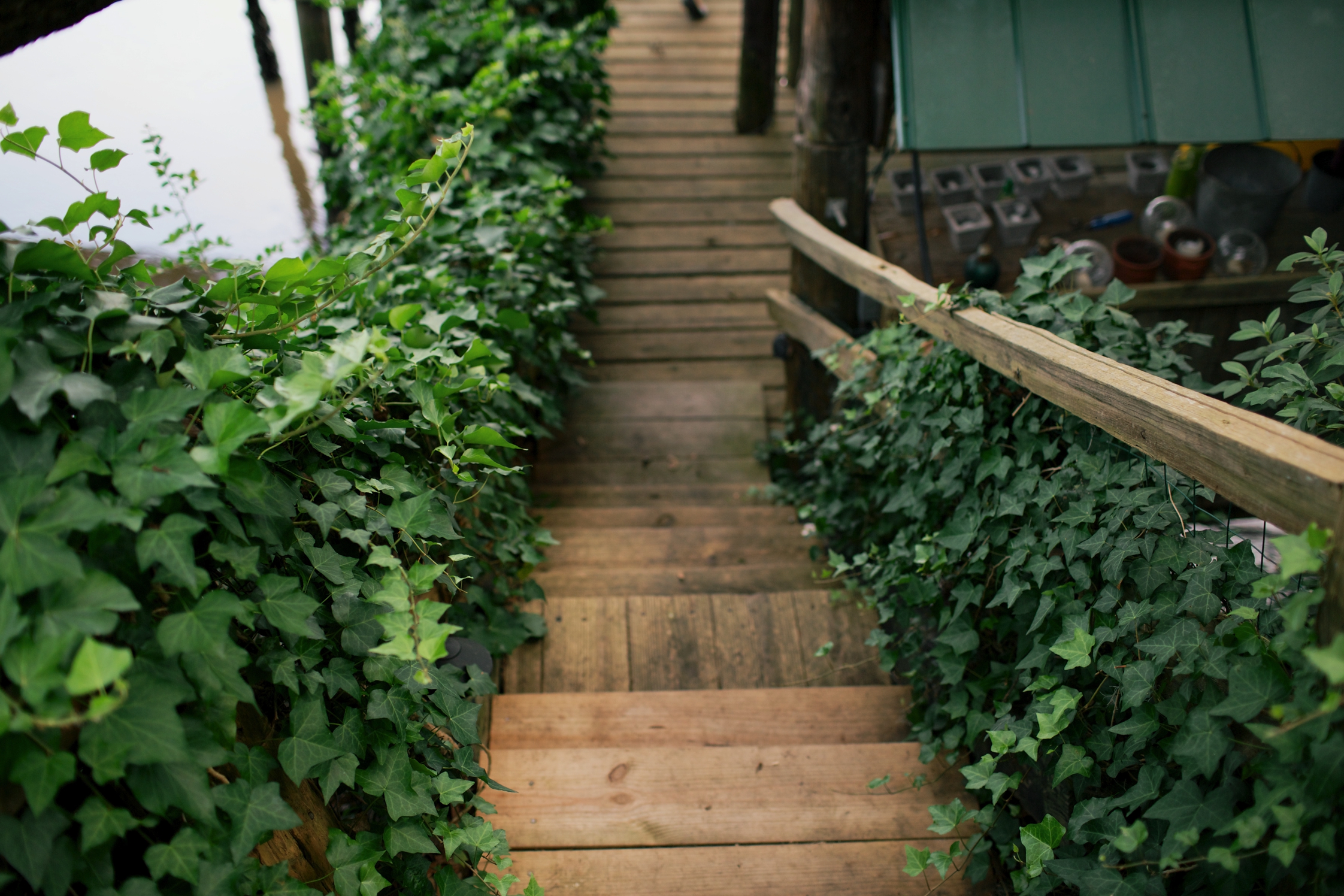
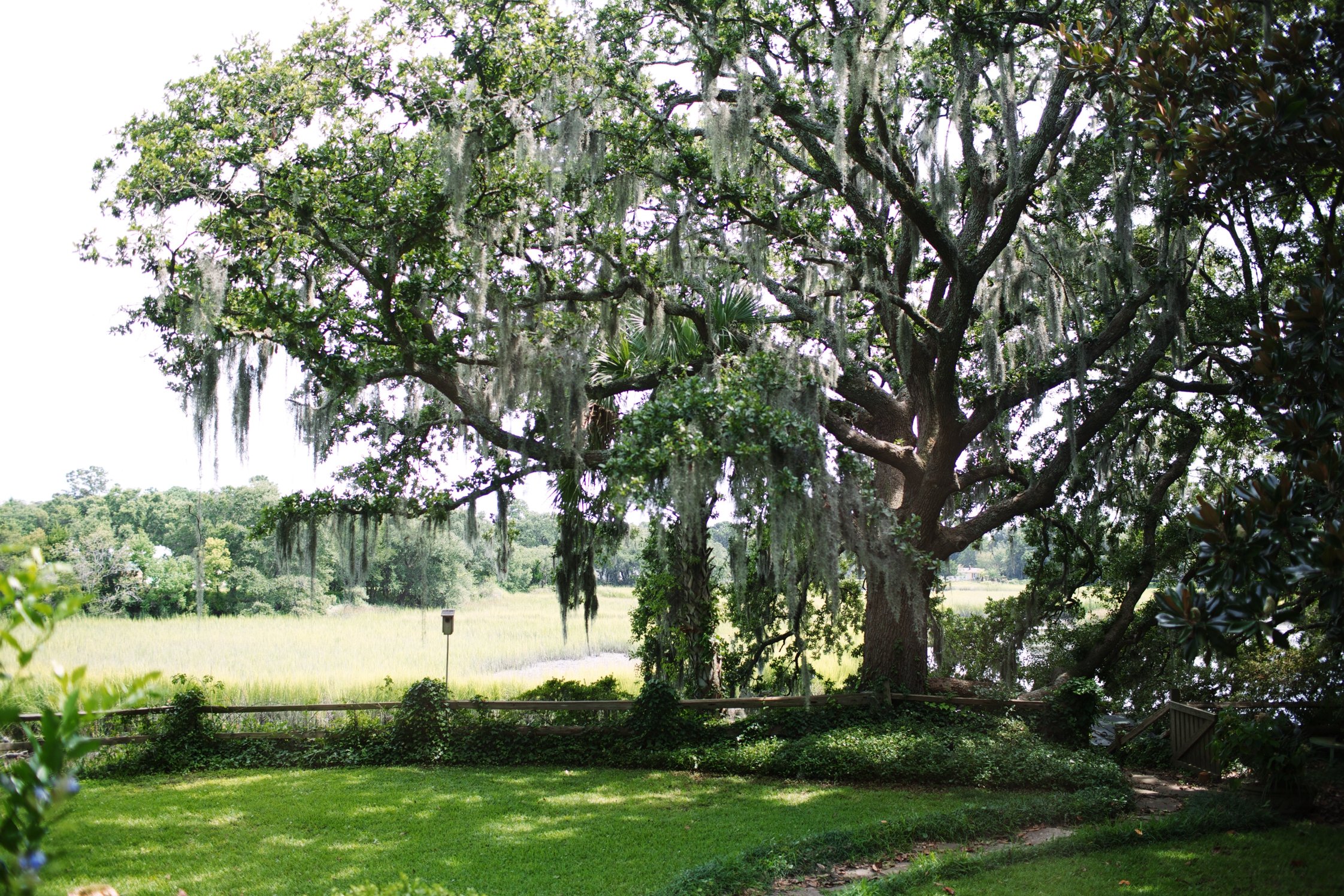
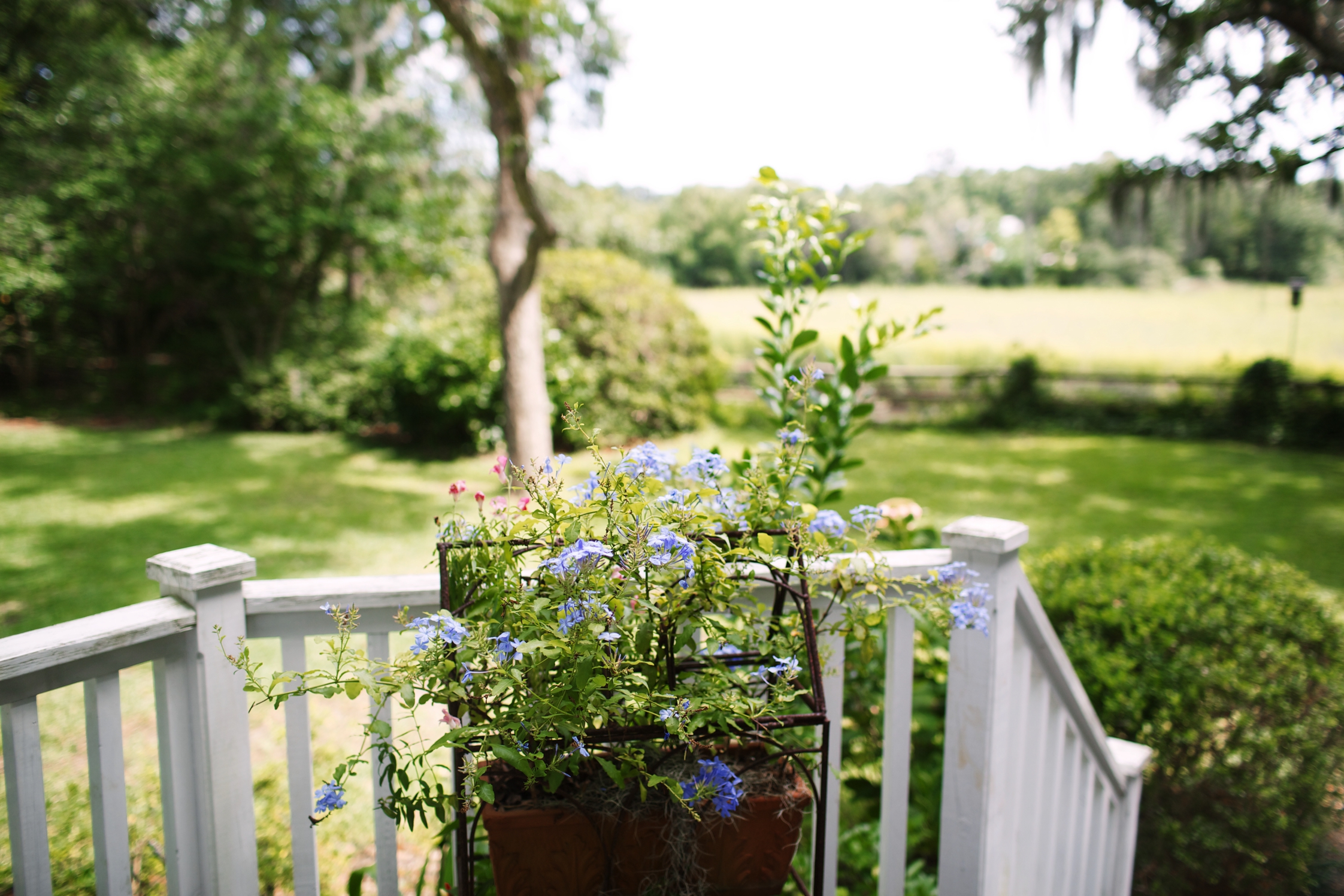
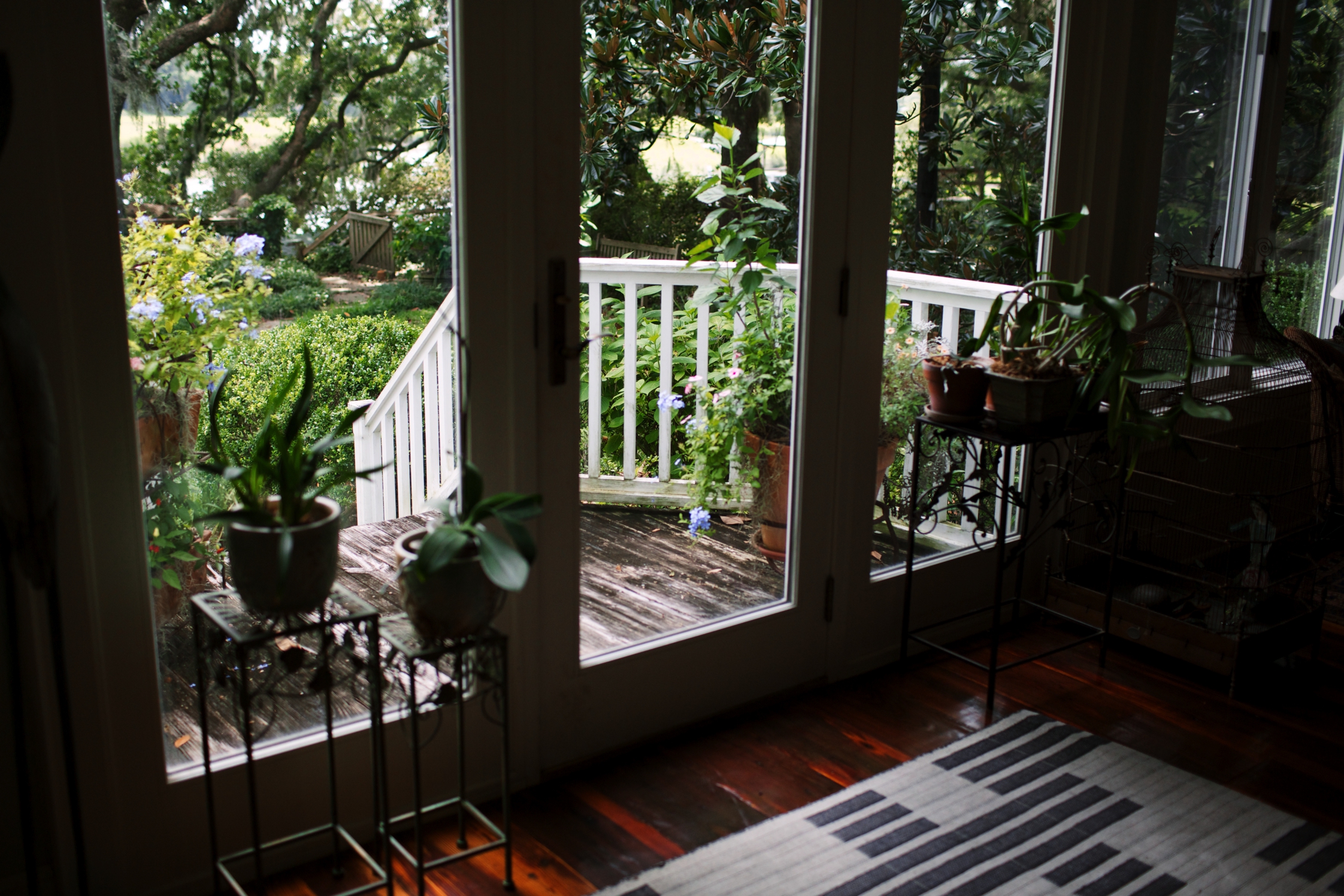
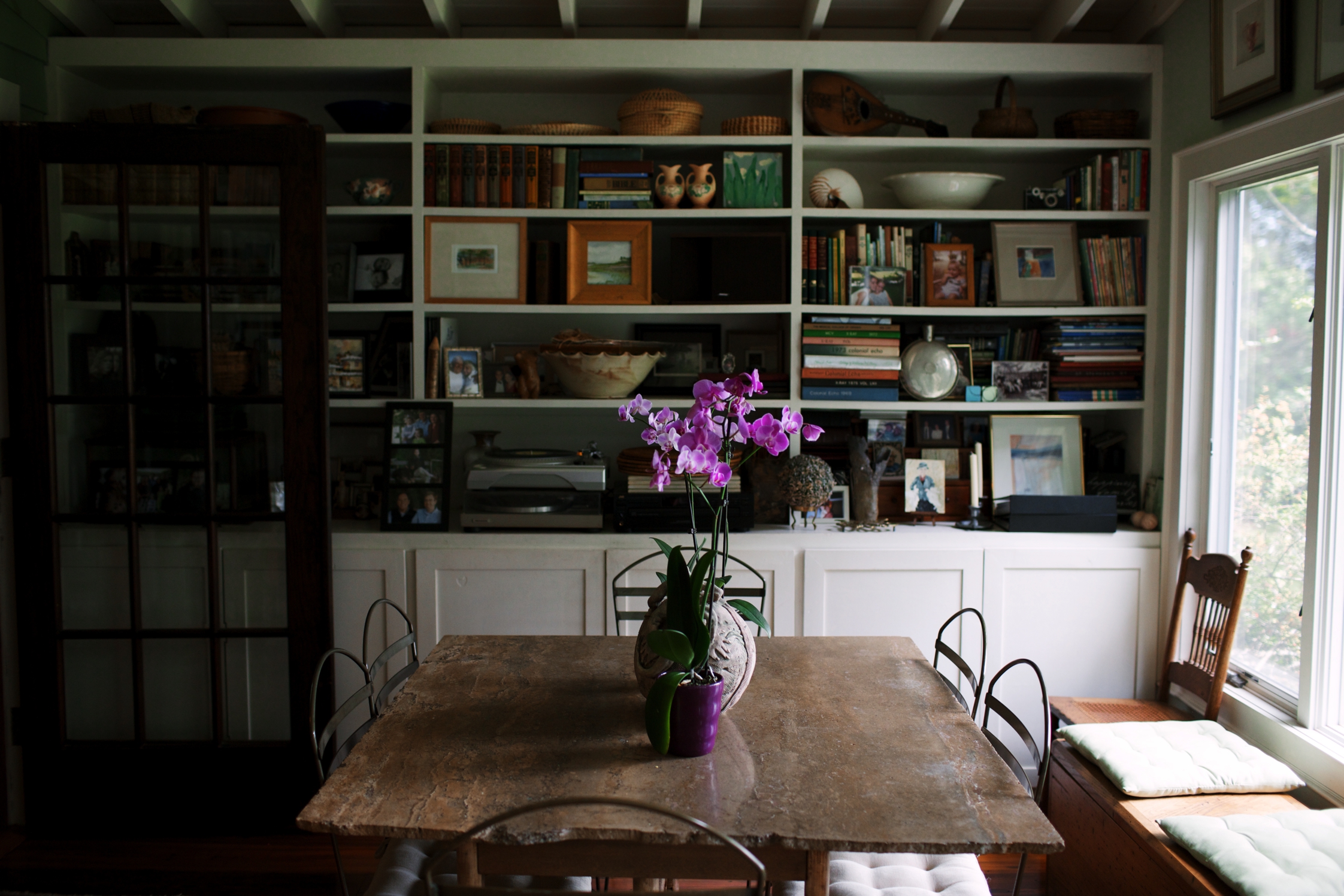
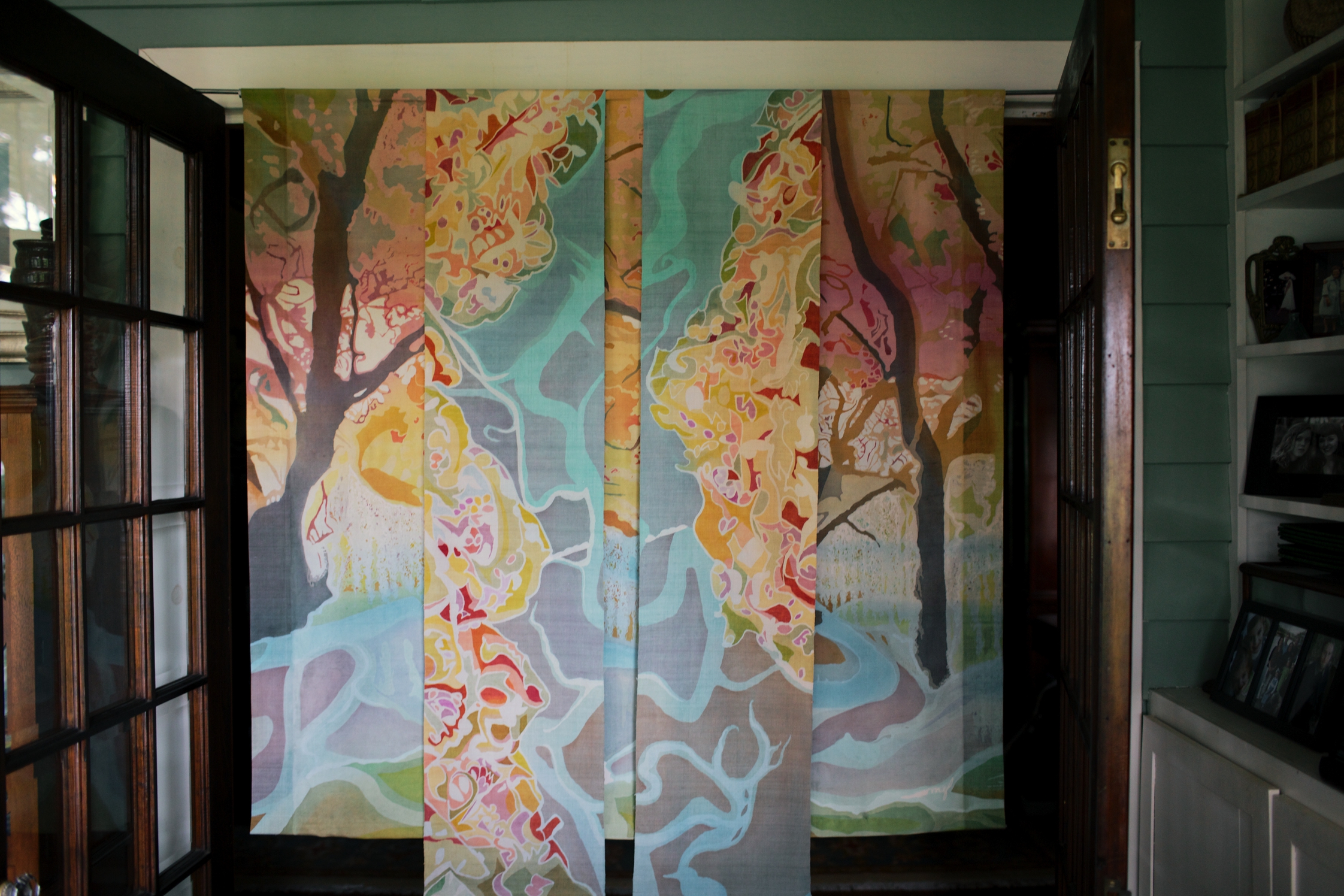
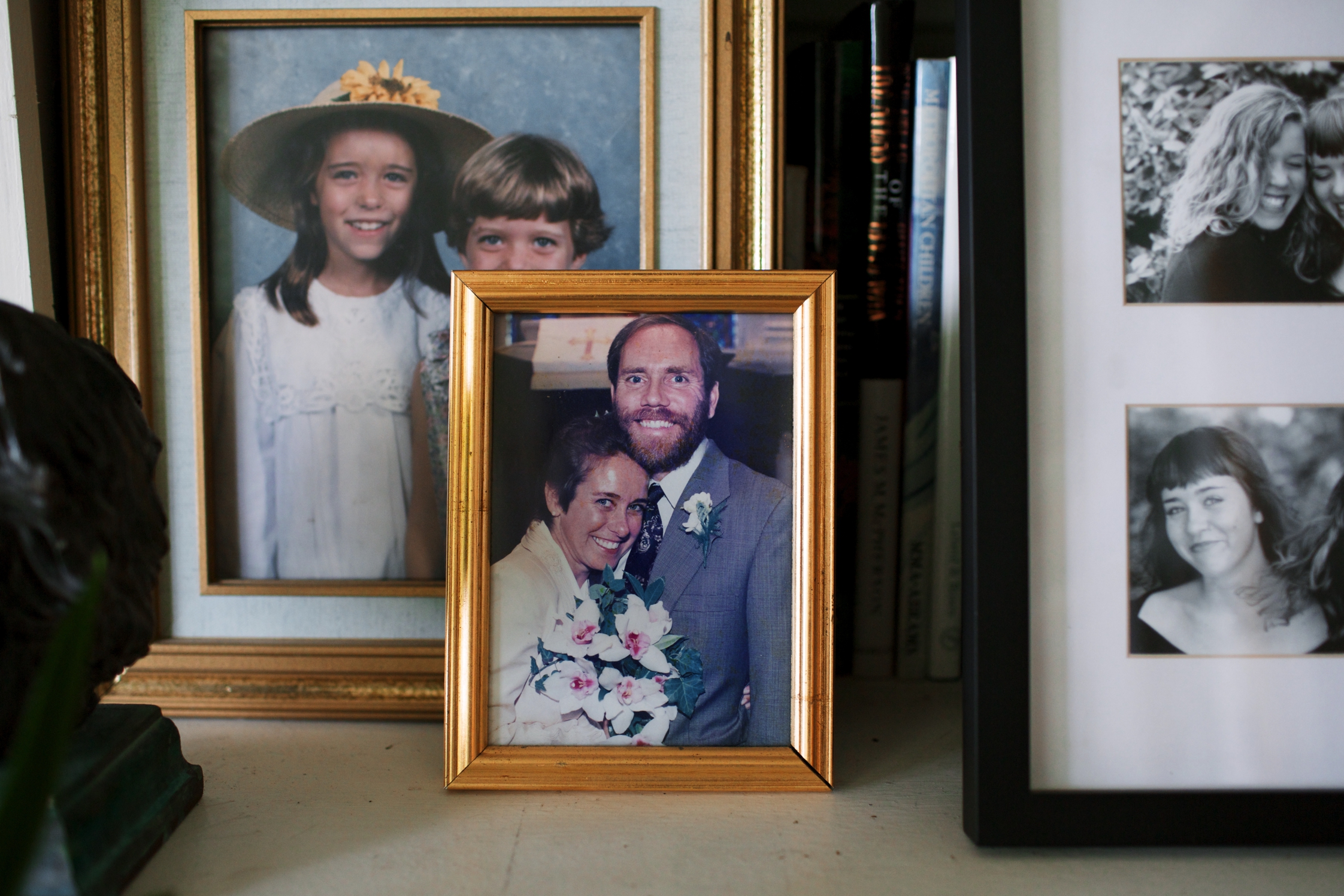
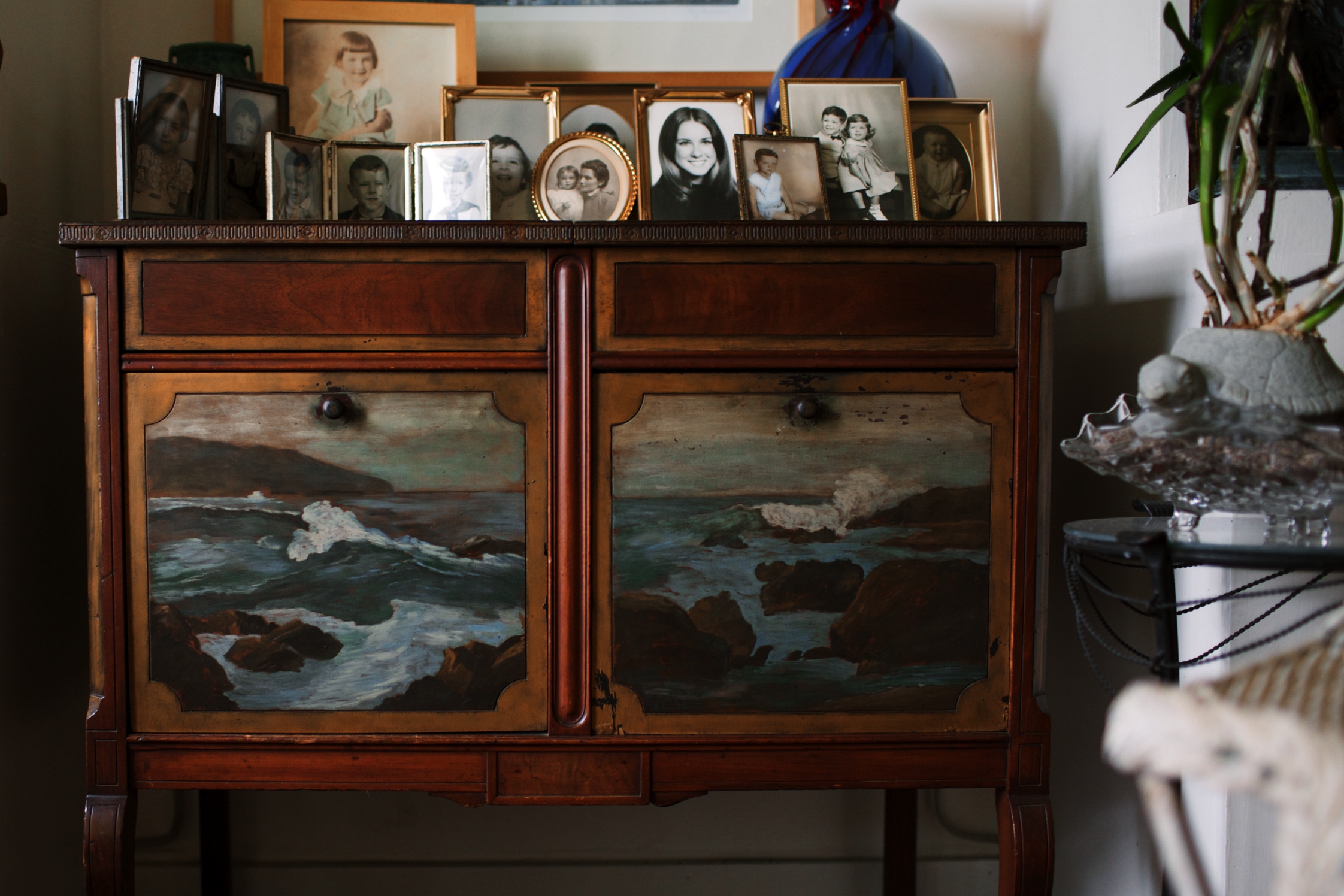
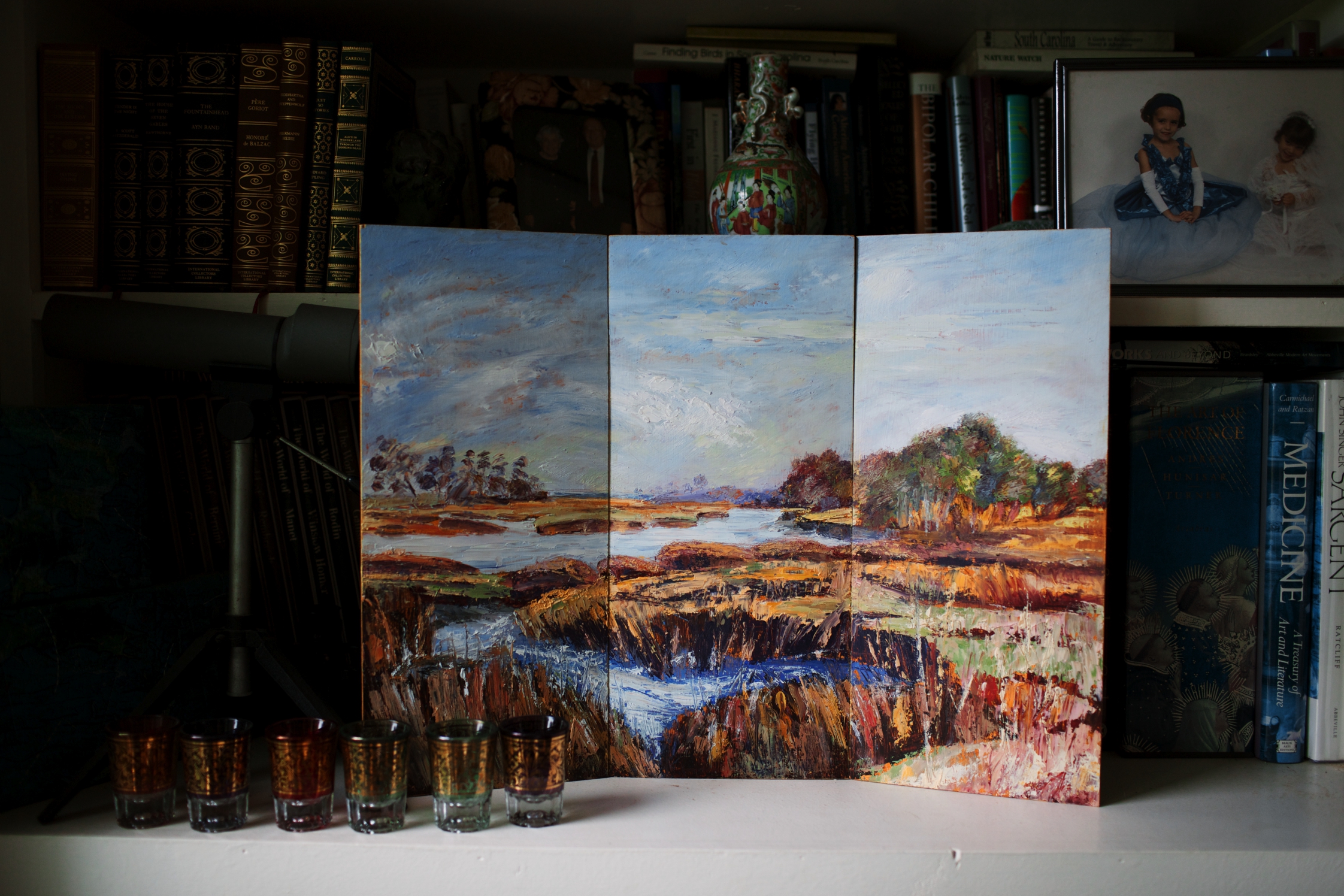
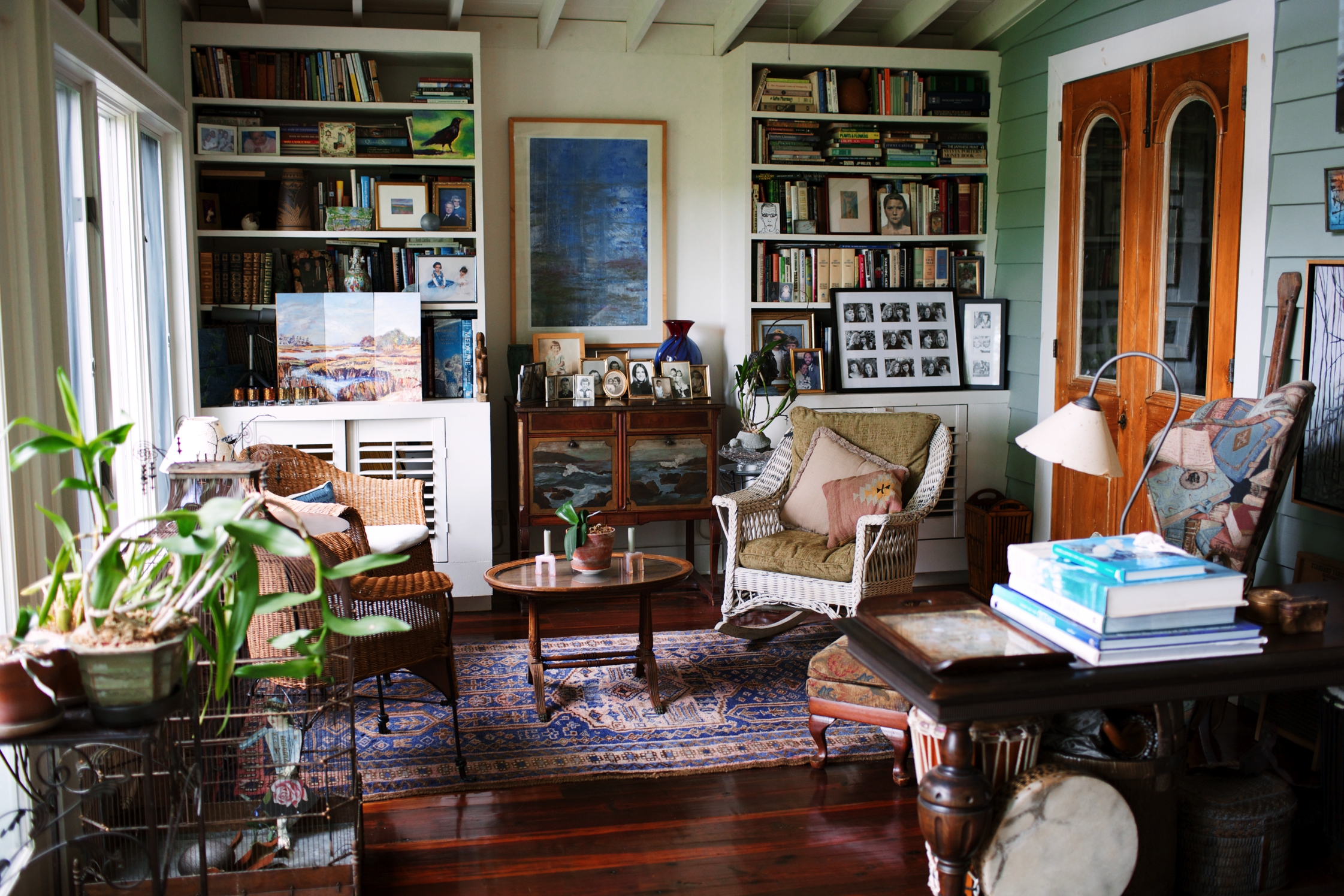
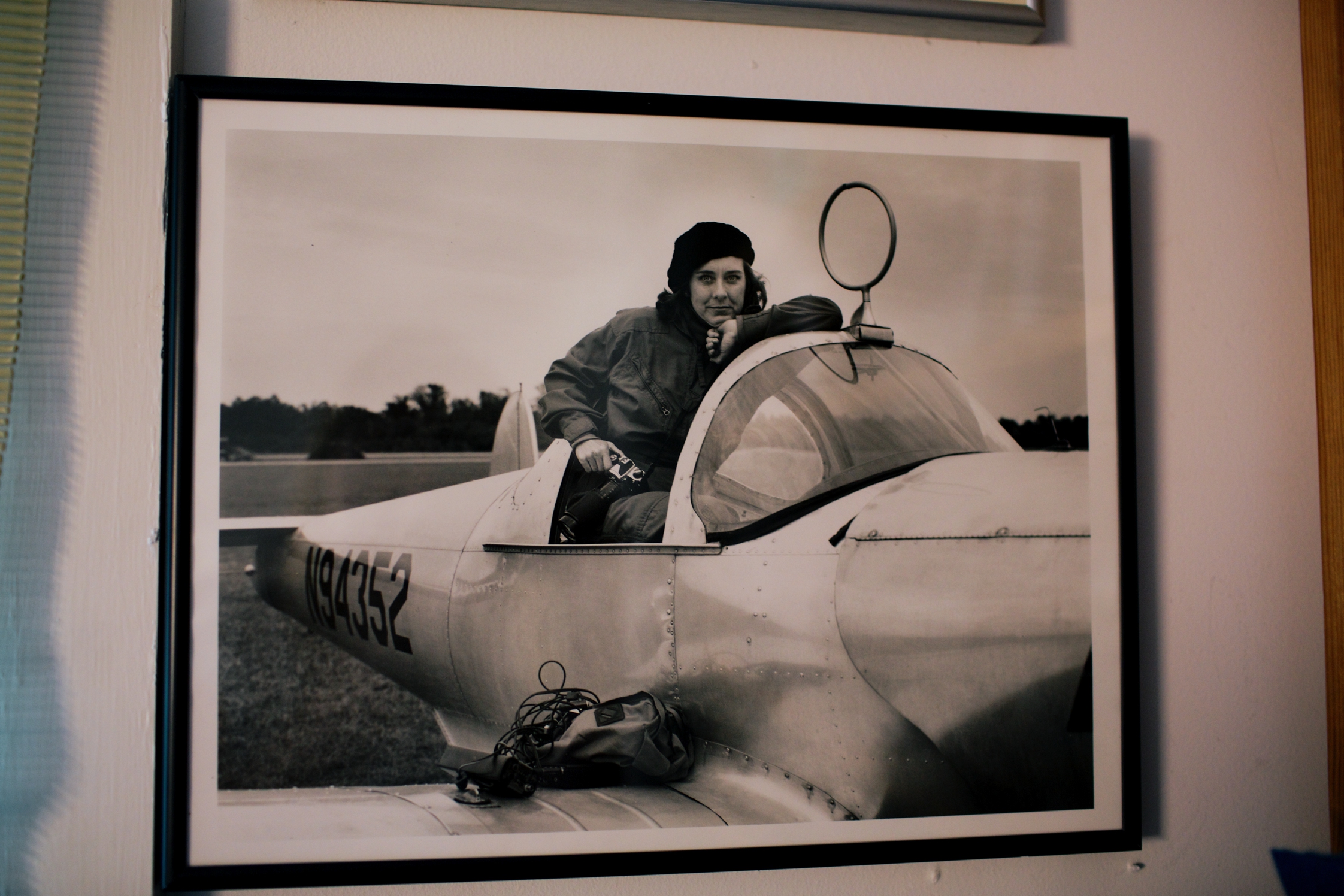

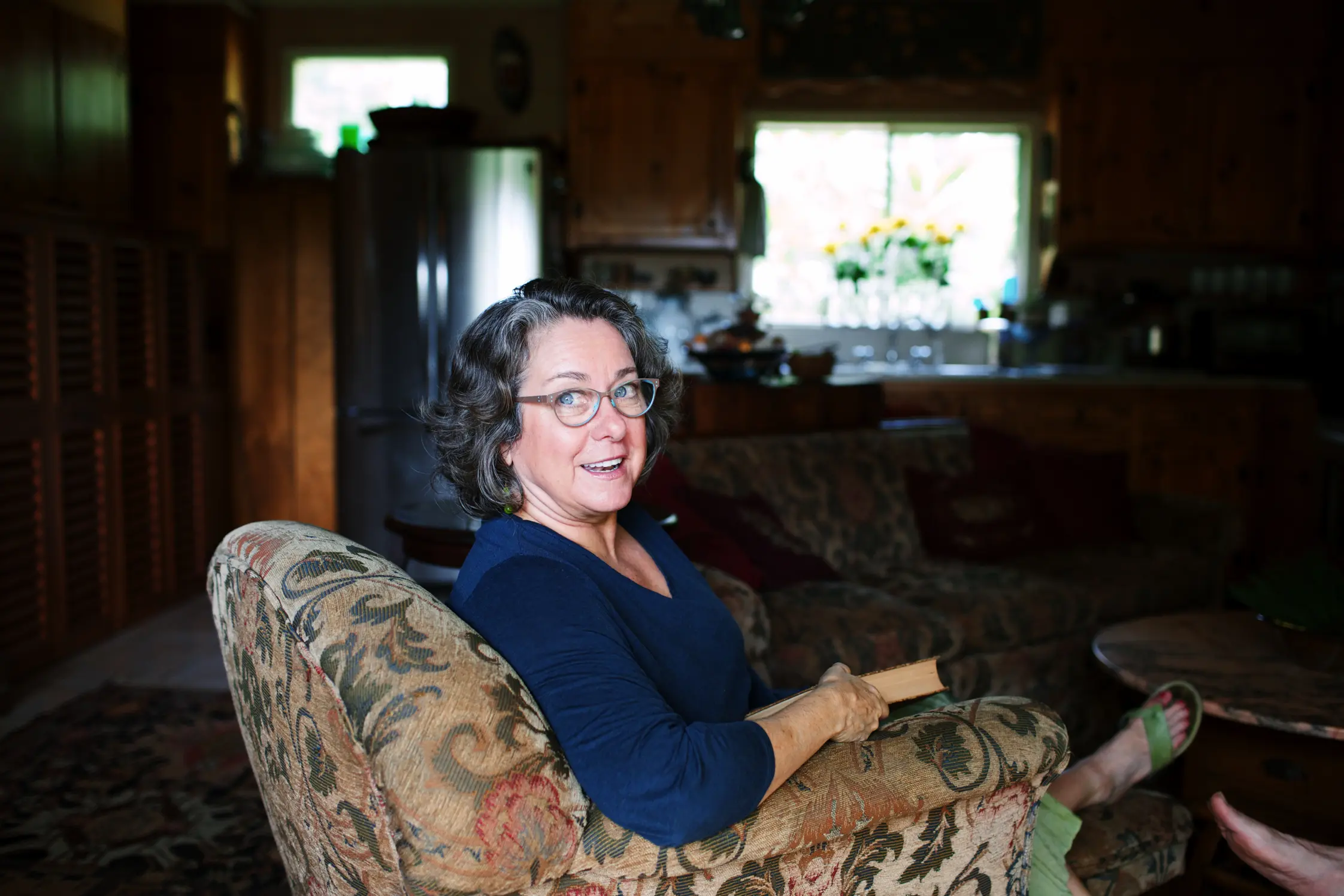
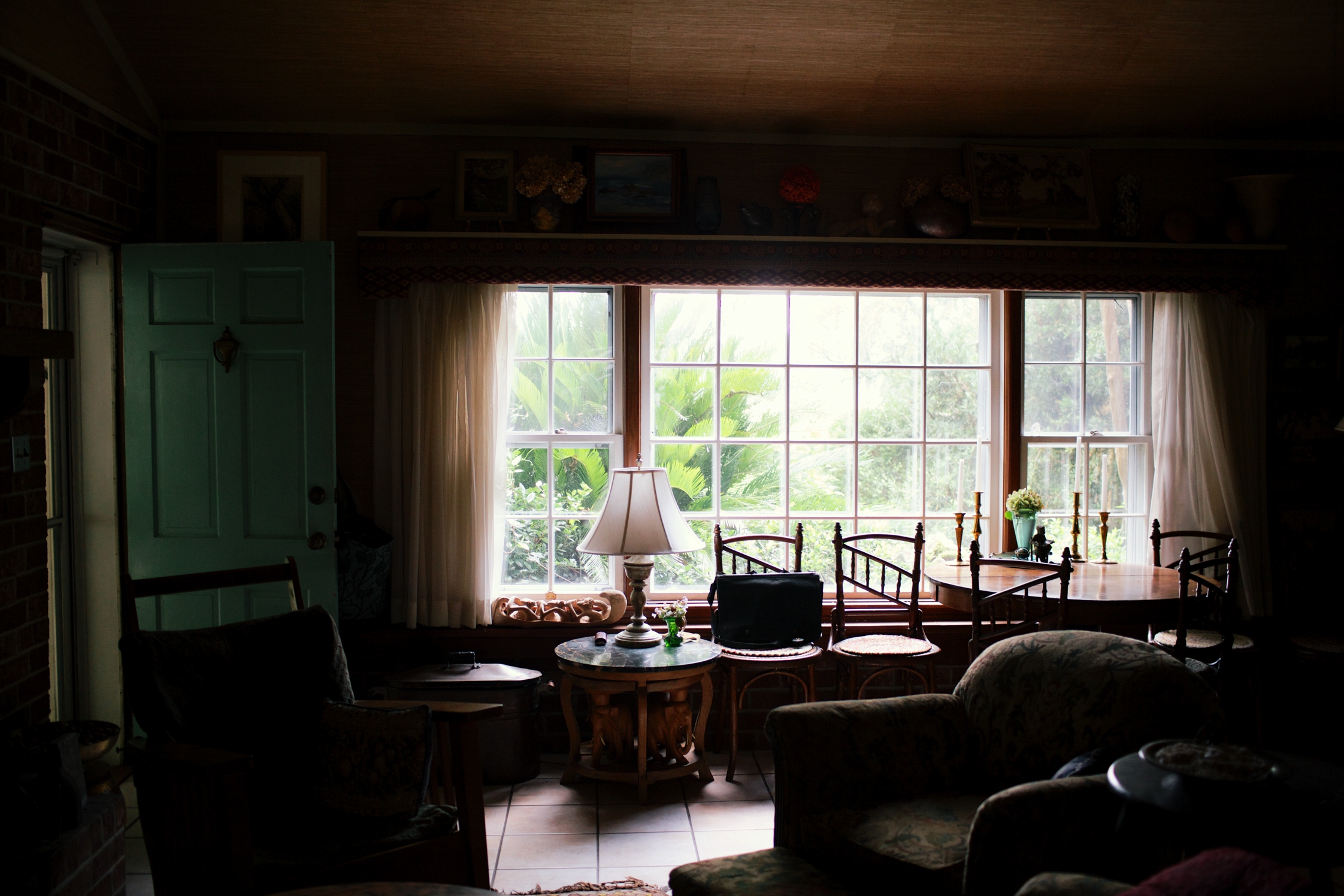
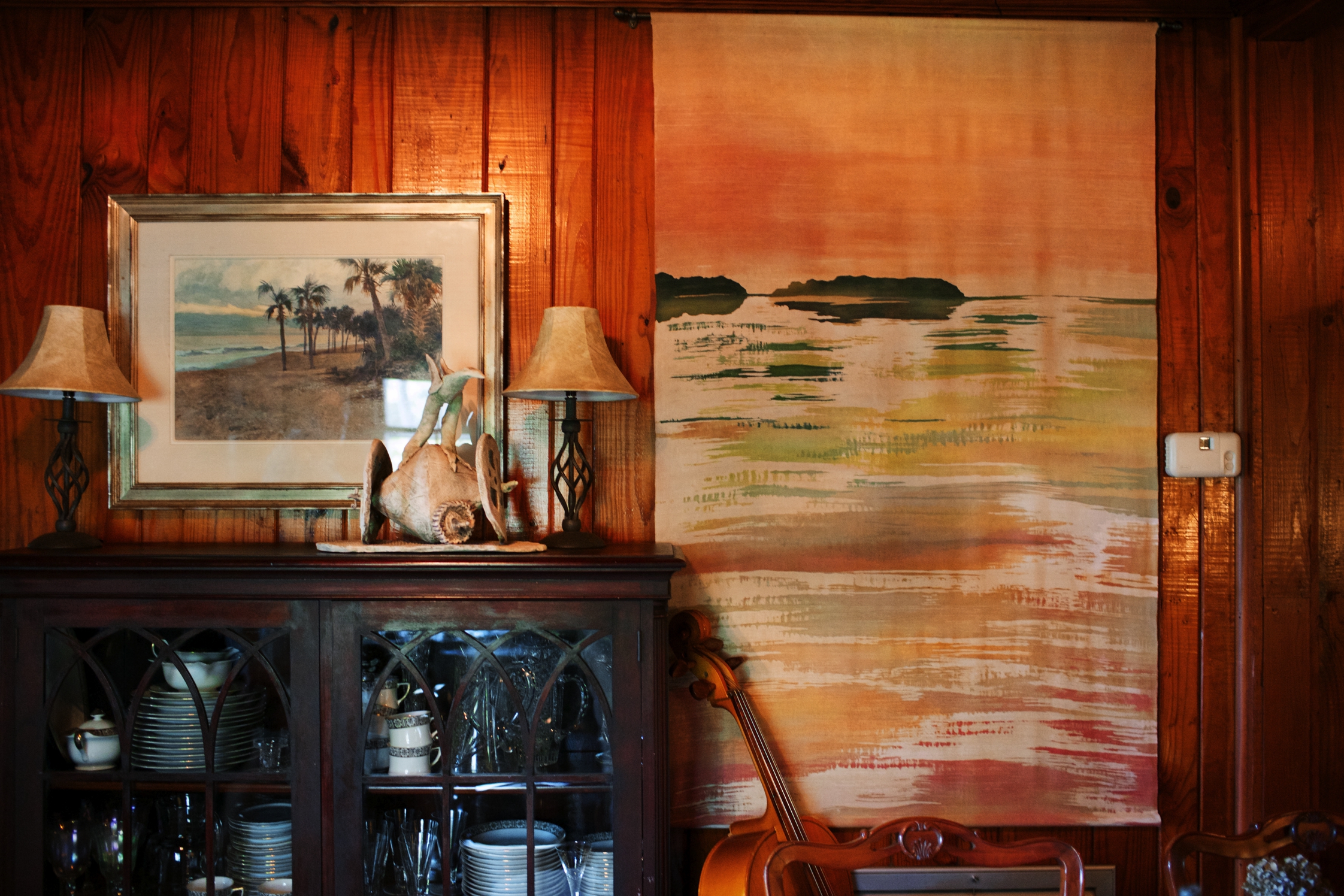
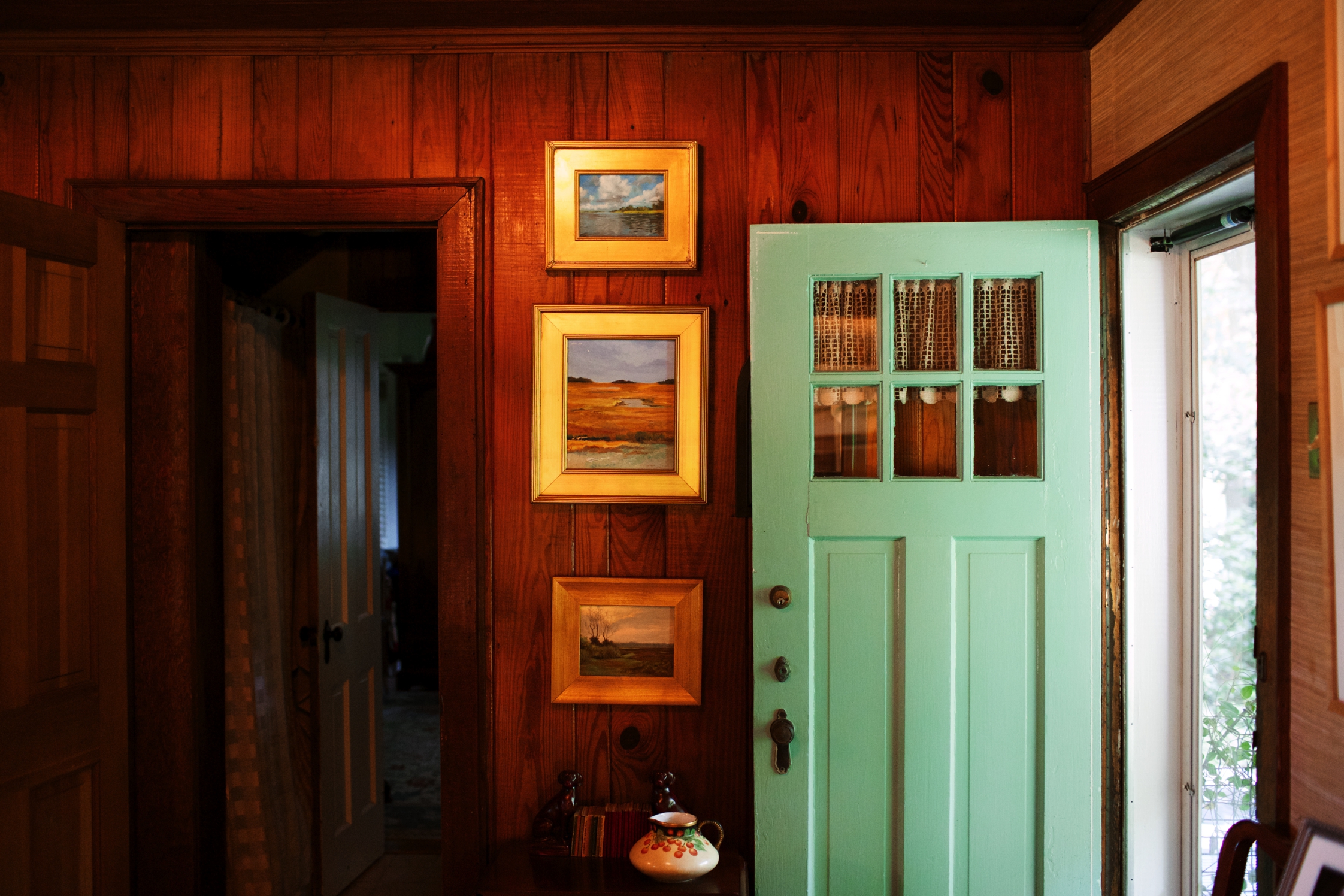
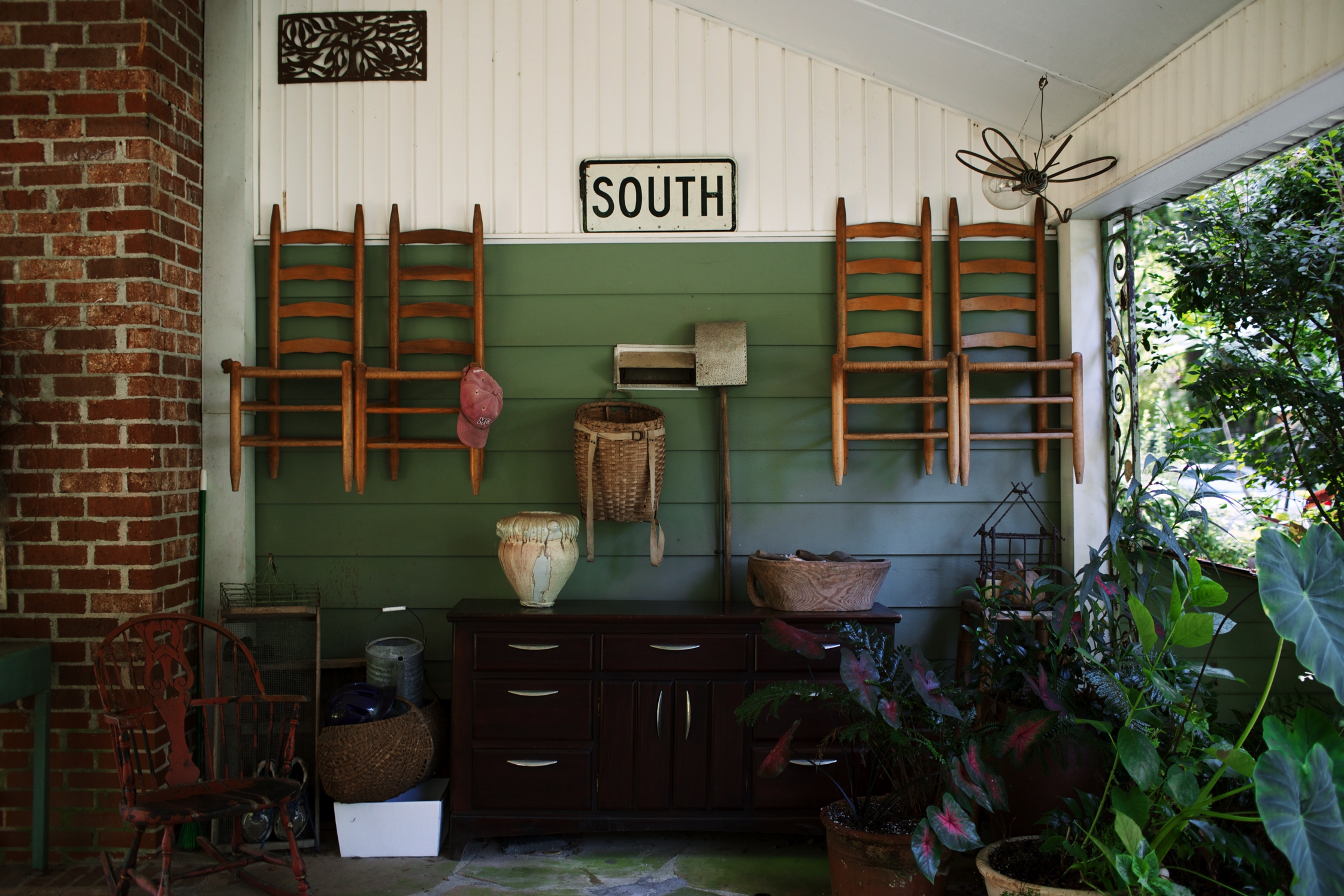
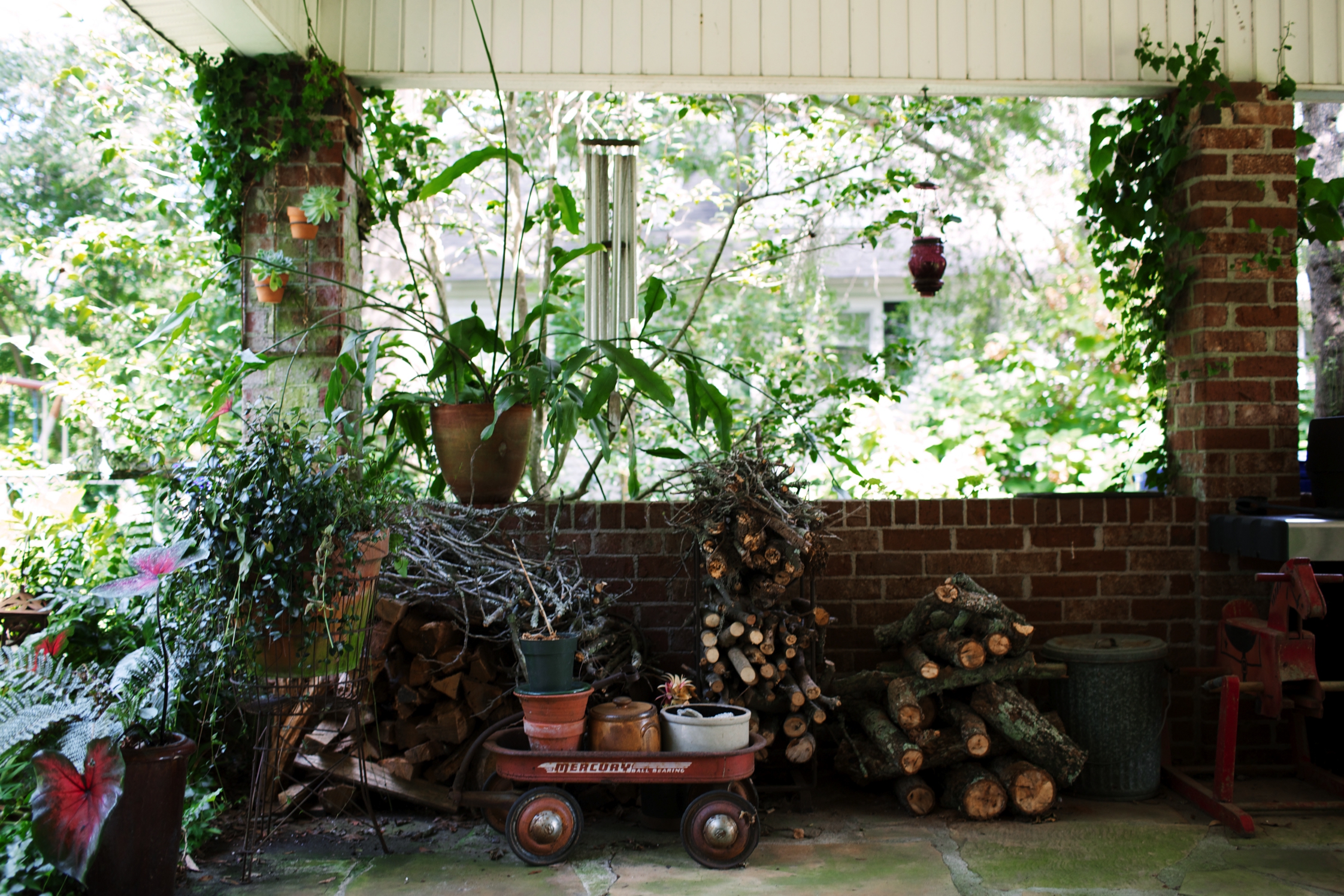
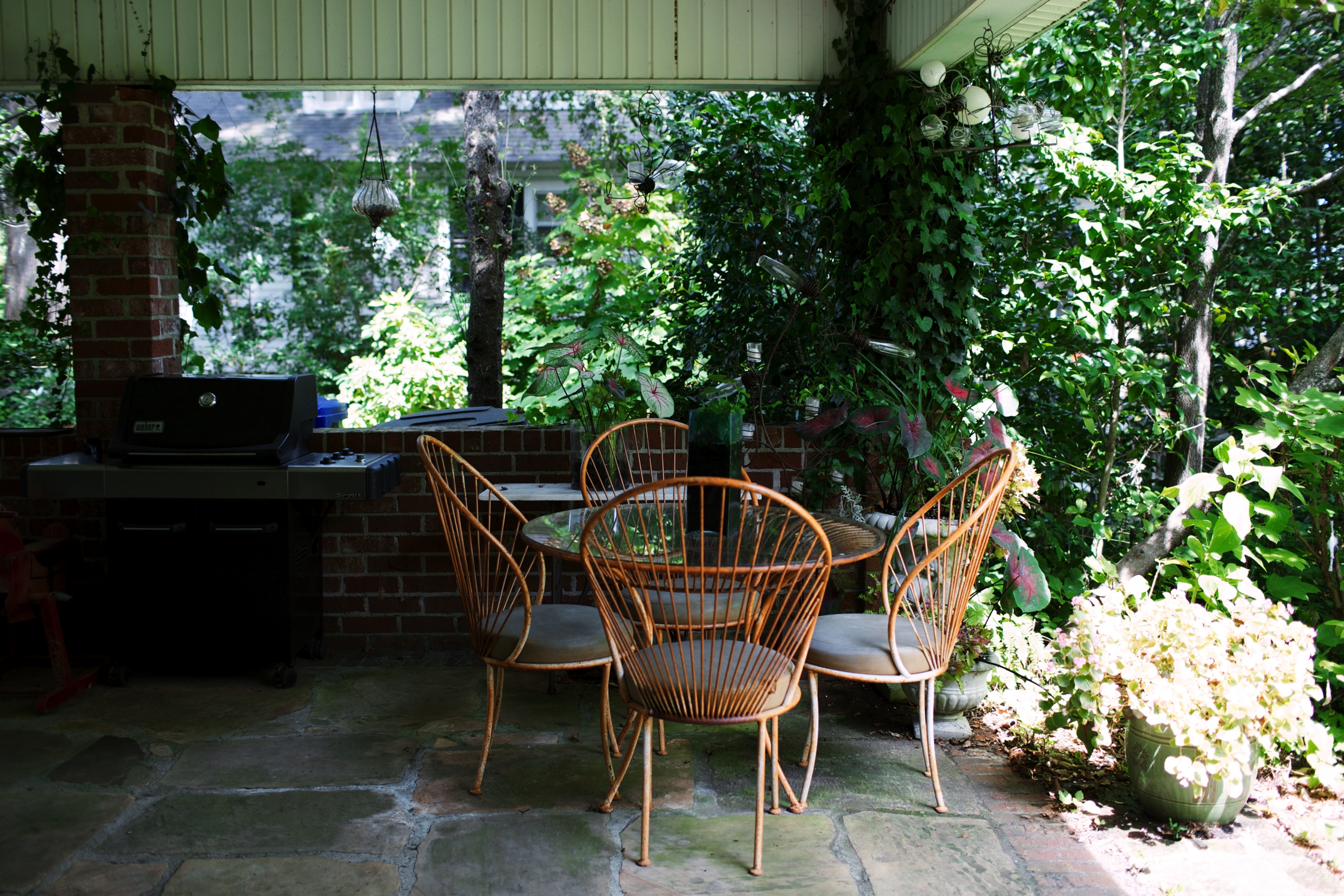
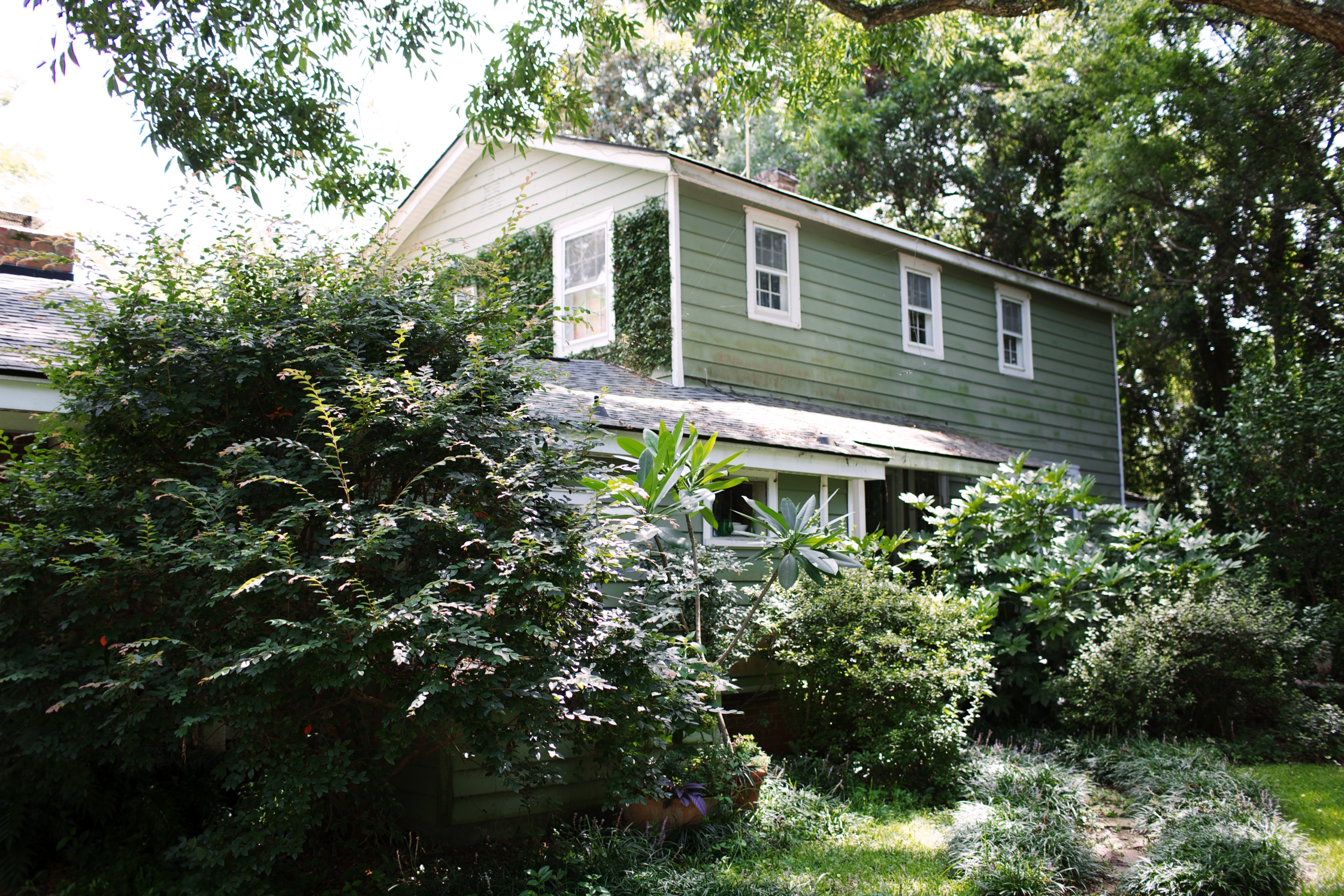
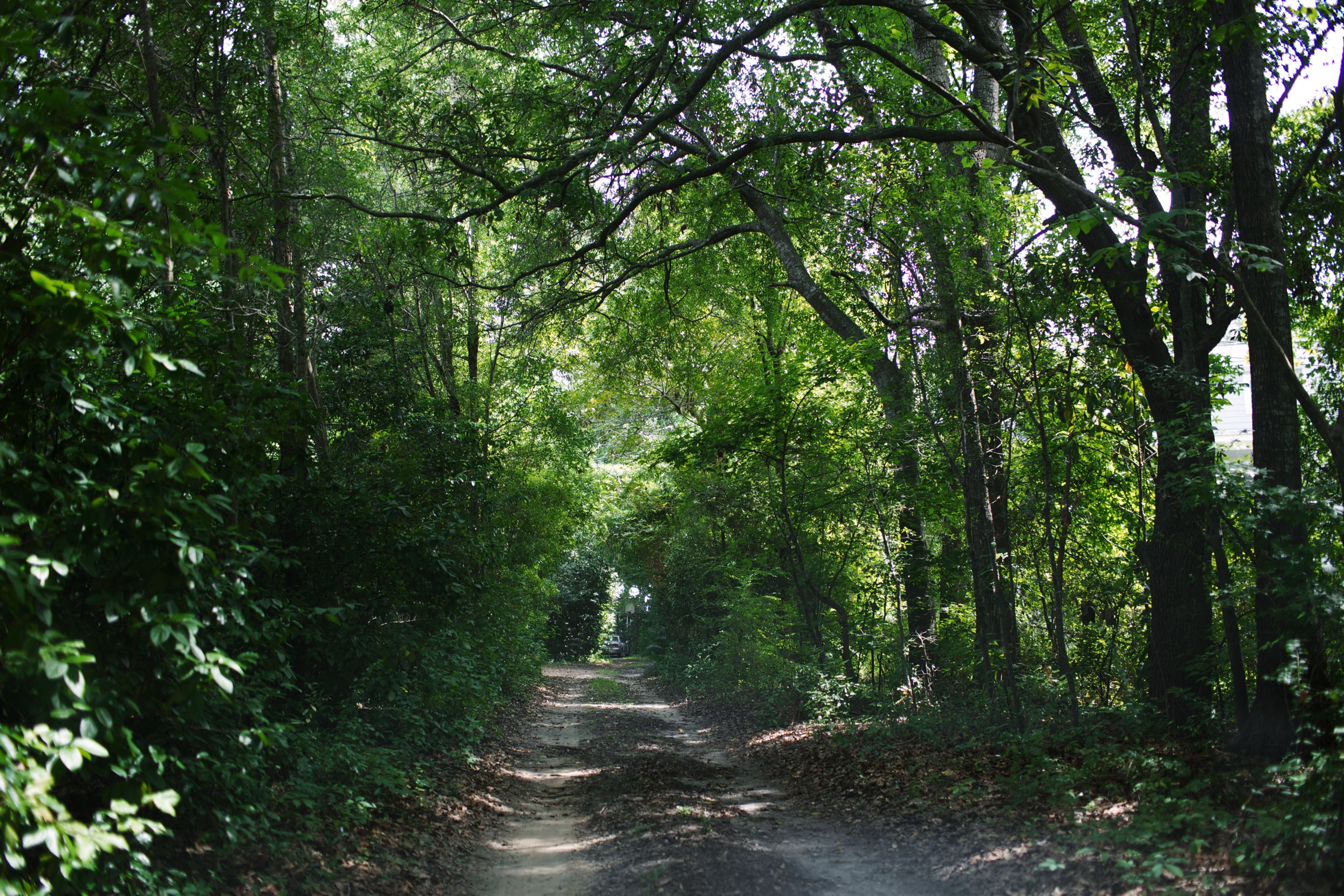
You are well known around the country as a leading batik artist. Tell us a little about what you do.
Well, batik is an ancient dying method that began before the Middle Ages and has traditions in the Middle East, China, Japan, India and Africa. It’s a process of creating designs on silk using wax and layers of dye. Originally, my focus was on creating aerial landscapes, but now I am doing all kinds of projects. I have actually created the largest silk batiks in the world.
How does the silk batik process work?
I start with a white cloth and paint hot wax over the parts that I want to keep white, usually just a tiny bit. I create another layer of wax and dye it the second value. It’s a long process because each color has to be added individually — a true labor of love.
When did you first get started with this art form?
My grandfather had a 1946 Ercoupe that was passed down to my father and now to my brother. I have been flying since I was in my mother’s belly. In 1979, I was flying over the Georgia coast with my brother and I started taking aerial photographs of the coastal waterways and sea islands. I thought, this is how I can combine my two passions for art and flying. Everyone has a sense of place, they like to know where they are on the map. I realized that I could make a living painting these landscapes.
It seems like batik is the perfect medium for depicting air and water.
Oh it is! It has taken my eye to the deepest places in the ocean and then up into the heavens. Both sky and water are constantly changing landscapes and I think the movement of the dye really captures their transience.
What are you working on right now?
At the moment, I am working on a piece with the Smithsonian National Air and Space Museum in collaboration with Mark Mercury, a planetarium composer. Our next show is mapping the planets in silk and sound. Smithsonian National Air and Space planetary geologist Ted Maxwell writes the scientific explanation of what I am depicting as an artist. Actually, in 1995 I was an artist for NASA — they pick one every year and that year they chose me.
You have such diverse interests, what kind of childhood did you have?
I grew up in Fayetteville, North Carolina. We lived way out in the country on a dirt road and my parents grew vegetables and we had a horse. I could ride for miles or take my motor scooter on the backroads. I think I kind of got to grow up as a boy. It was right around the time of Vietnam and my dad didn’t put a lid on me. Because of that I think I have more gusto than a lot of people have.
Do you remember when you first started getting interested in art?
My parents were very eccentric and they allowed their kids to be eccentric, so I always had the notion that I could make things. I remember that the next-door neighbor had all of these How to Draw books. Being obsessive-compulsive, I would go over to her house and draw everything in them from cover to cover — horses, flowers, dogs, birds. I’ve always been very intense and able to hyper-focus. Some people call it a disorder, but I think it’s good for an artist to be this way.
And then where did you learn batik?
I went to East Carolina University and majored in textiles and interior design. This is how I acquired my love for fabric. I had a professor who was married to a man from India who encouraged me to try batik. Instantly, I fell in love and I have never left it.
So how did you end up in Charleston?
Well, it’s actually a sad story. I had a son who died when he was three-years-old. He had a rare condition that twisted his intestines. His death ended up breaking apart my first marriage, which is actually quite common. I was living up North and I wanted to be closer to home. My friend Peggy called me one day and said she had a studio big enough for my work in Charleston and asked if I wanted it. I said yes. I ended up having two more children, my beautiful daughters, and raising them here. Then I married my husband John. We have been together happily for 20 years.
What is it about Charleston that keeps you here?
The people keep me here. It is an incredibly supportive community, particularly for artists. People don’t ask you, “Oh you’re an artist, but what do you really do?” It’s a very respected profession in this city. The older artists support the younger artists and the younger ones respect the older.
Tell us a little bit about this house and property. What about this landscape draws you in?
The house was built in the 1940s, but many of these trees are over 200 years old! This landscape is actually pretty funkadelic. I can come out here any time of the year and match the vibrant colors to the dyes in my work. In the fall the marsh turns golden, and the sunsets give you wild pinks and oranges. There is the bright green and chartreuse of springtime and the constant bloom of camellias, azaleas, and magnolias. I practice with my band out of the dock and when the kids were younger, they would swim in the creek.
Do you ever swim?
My husband John and I swim all of the time, you can actually go out for four hours and come back with the tide. The only things you have to watch out for are gators and oyster beds. Usually the gators prefer fresh water and these waterways are salty, so they are not a huge problem. We did see a little one this summer though! I used to swim nude at night, but not anymore.
What kind of band are you in?
My band is called The Lime and the Coconuts, and we can be any type of music because I am the Lime and I hire the Coconuts! We do blues, big band swing, folk — you name it. Mostly I play the guitar, but I also like the mandolin, the banjo, cajun accordion, and the string bass.
You mentioned that your children are artists, what kind of advice do you give them?
In this day in age, it is important that they pursue their art and keep a job on the side. I also tell them that they have to practice. It’s like playing the piano; you can’t just expect to automatically be good. You have to train yourself everyday. I have completed over 500 batik on silk pieces and with every one of them, I try a new technique. Even if it is just a small thing, it has to be something I have never done before.
Are there any particular messages that you try to send with your life and art?
I love the meditative quality of my art form and the way it makes a difference in this time on Earth.
Thank you Mary Edna for showing us around your home and studio and inspiring us with this interview. To find out more about Mary Edna’s work see her website here.
This portrait is part of our ongoing collaboration with ZEIT Online who present a special curation of our pictures on their site. Have a look here.
Photography: Olivia Rae James
Interview & Text: Kristen Gehrman
